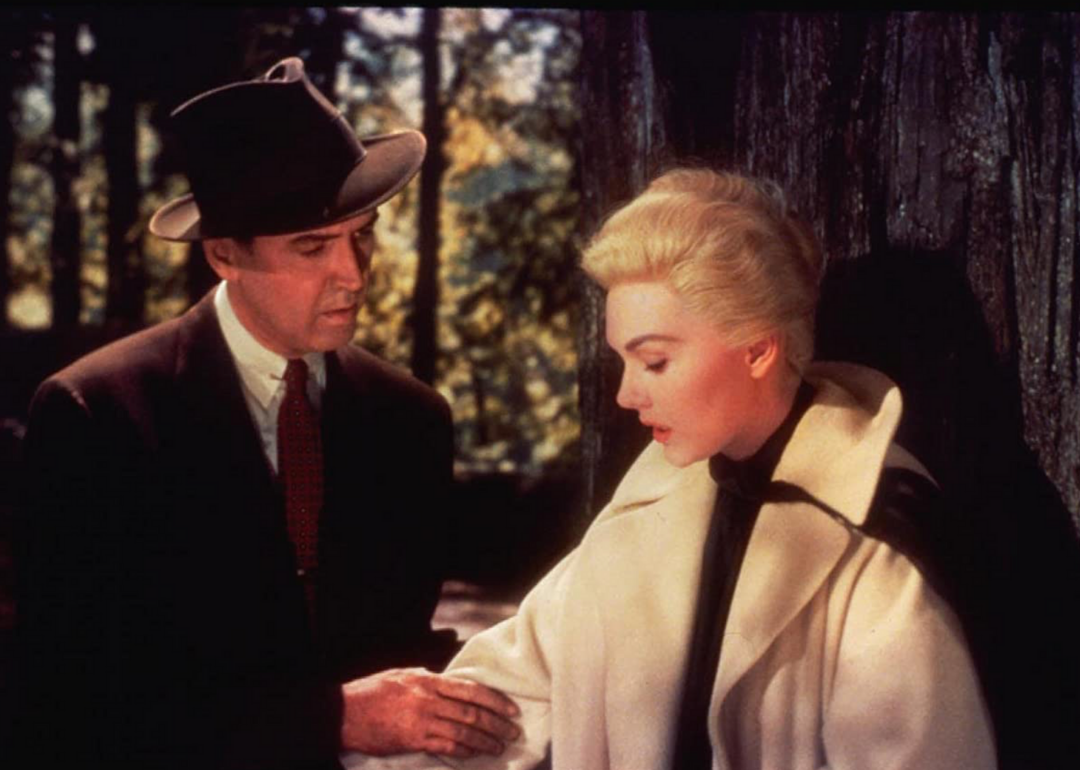
90 / 100
Paramount Pictures
#11. Vertigo (1958)
– Director: Alfred Hitchcock
– Stacker score: 95.3
– Metascore: 100
– IMDb user rating: 8.3
– Runtime: 128 minutes
Nothing is as it seems in “Vertigo,” an Alfred Hitchcock classic based on Boileau-Narcejac’s 1954 novel “D’entre les morts” (“From Among the Dead”). In the film, a former police detective (James Stewart) is hired to trail a friend’s wife (Kim Novak) who’s been acting strangely and may be at risk of harming herself. The otherwise mundane gig goes haywire as the private investigator becomes obsessed with the woman and Hitchcock shares his most revelatory, personal production of his career. The classic Hitchcock film was preserved in the National Film Registry in 1989.
You may also like: 100 best international movies of all time
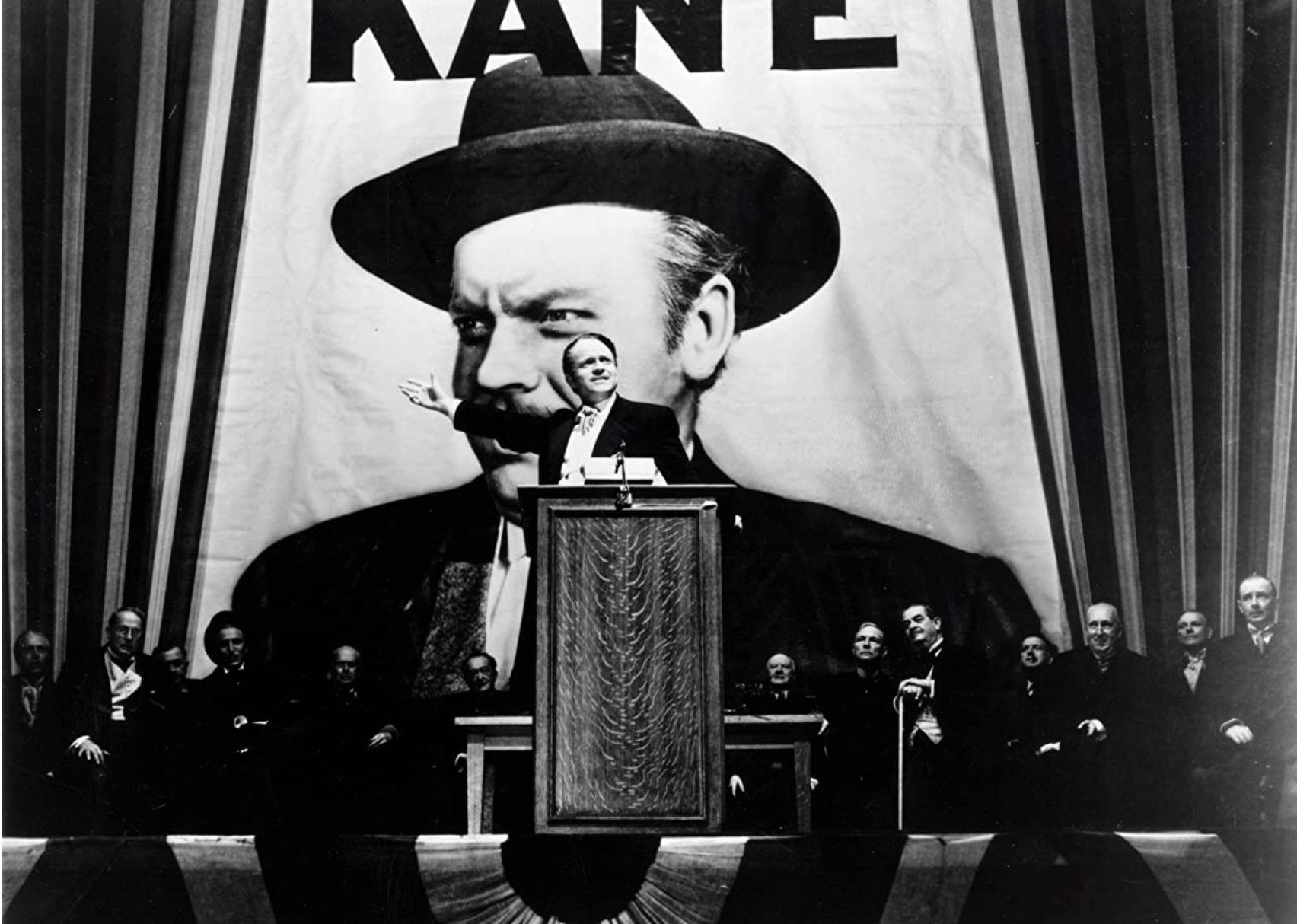
91 / 100
RKO Radio Pictures
#10. Citizen Kane (1941)
.- Director: Orson Welles
– Stacker score: 95.3
– Metascore: 100
– IMDb user rating: 8.3
– Runtime: 119 minutes
Here’s a movie so great that when something else is likewise terrific, that thing is often referred to as the “Citizen Kane” of its respective arena. Accordingly, this 1941 film—which depicts the ambitious rise of newspaper magnate Charles Foster Kane (Orson Welles)—has only gotten better with age. It might no longer retain the #1 spot on lists of the greatest films, including this one, but ask the right cinephiles, and they will likely assert “Citizen Kane” is still the best movie of them all. Despite garnering nine Academy Awards, the film only walked away with one, for Best Original Screenplay.
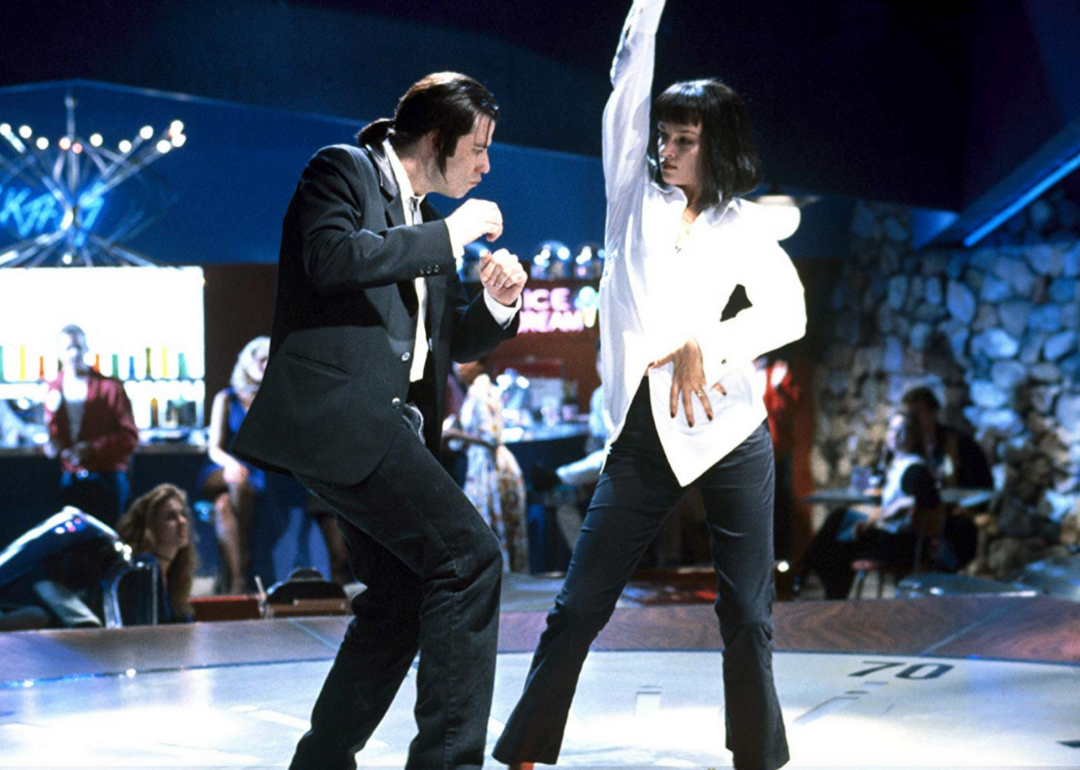
92 / 100
Miramax
#9. Pulp Fiction (1994)
– Director: Quentin Tarantino
– Stacker score: 95.3
– Metascore: 94
– IMDb user rating: 8.9
– Runtime: 154 minutes
Quentin Tarantino’s second directorial effort arguably remains his most quintessential work. Interweaving three violent stories—while simultaneously paying homage to a host of influences— “Pulp Fiction” is quite simply the stuff that great cinema is made of. Speaking of influences, the hit film was happy to pay it forward, inspiring a wave of upcoming auteurs. In 2013, “Pulp Fiction” was chosen for preservation in the National Film Registry.
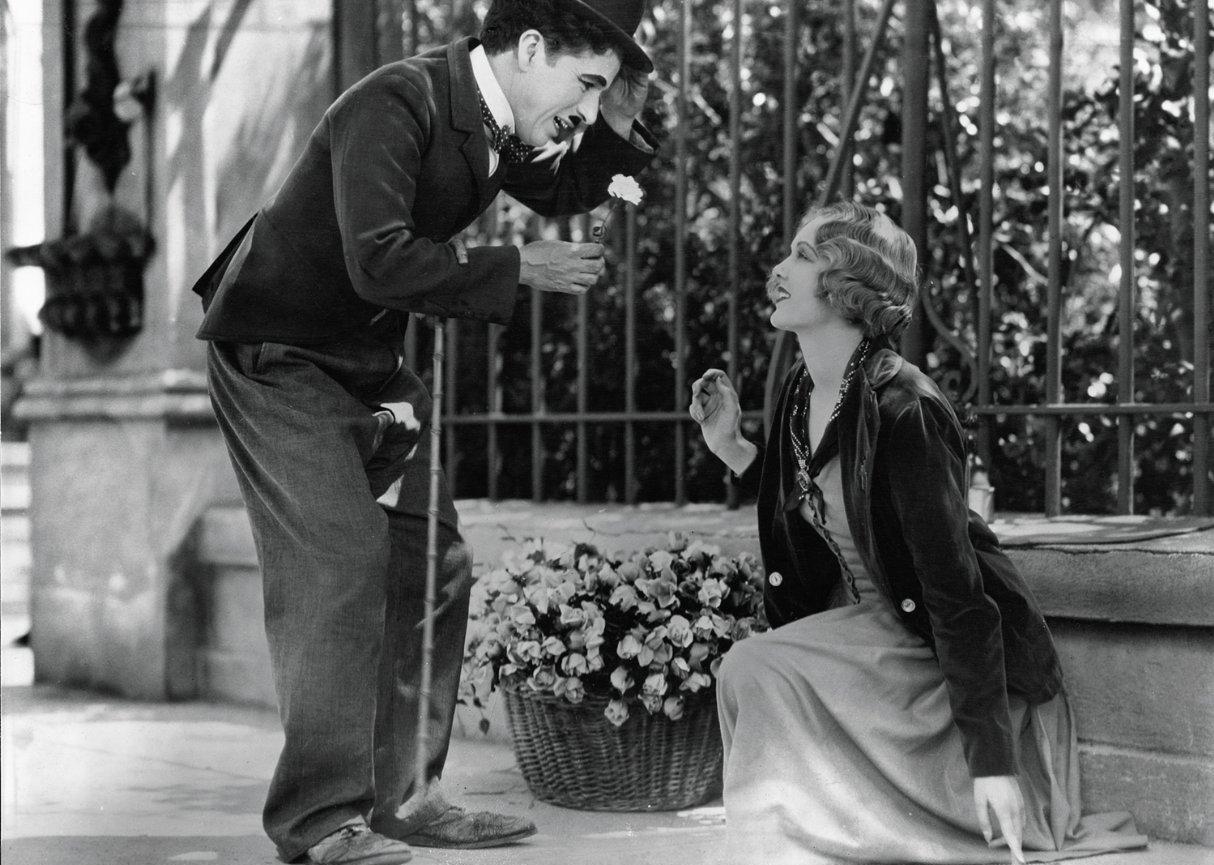
93 / 100
Charles Chaplin Productions
#8. City Lights (1931)
– Director: Charles Chaplin
– Stacker score: 95.8
– Metascore: 99
– IMDb user rating: 8.5
– Runtime: 87 minutes
Sticking to his well-established roots, Charlie Chaplin released this primarily silent film three years into the talkie era. Rife with signature pantomime, it follows The Tramp (Chaplin) as he resorts to various extremes while trying to make a buck. It all paves the way for one of cinema’s most unforgettable final scenes, during which the story’s underlying pathos is laid bare. Hailed as being one of the greatest and most inspiring films, “City Lights” went on to be preserved by the Library of Congress in the National Film Registry in 1991.
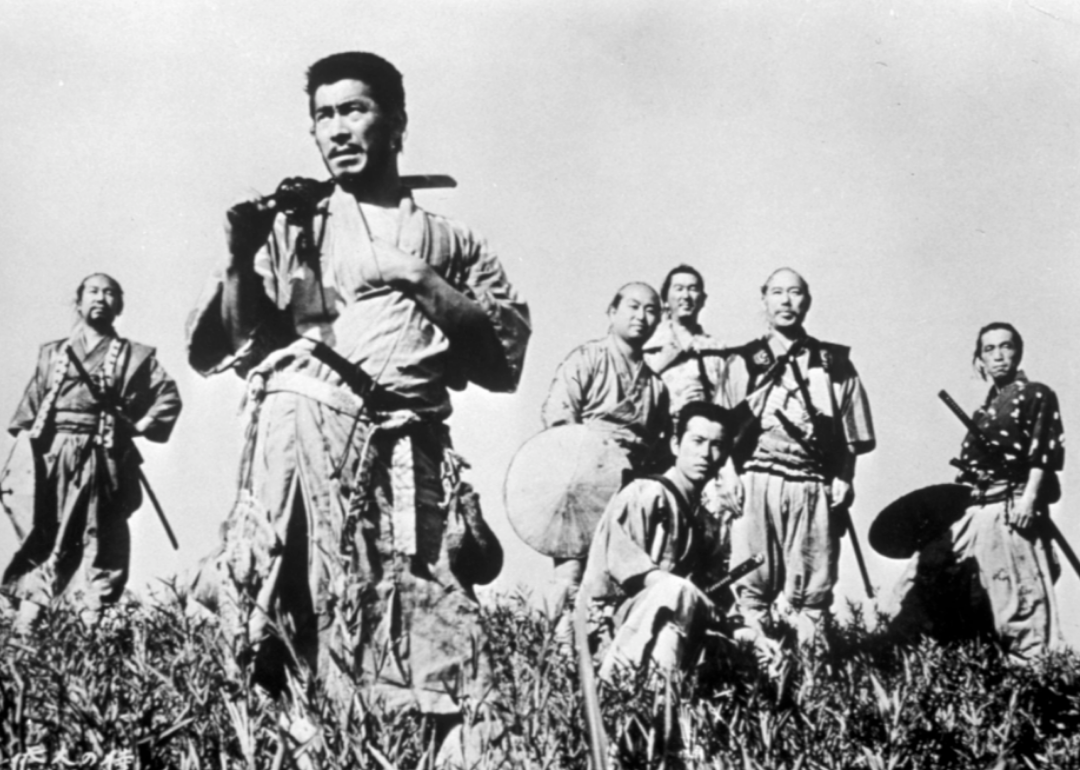
94 / 100
Toho Company
#7. Seven Samurai (1954)
– Director: Akira Kurosawa
– Stacker score: 95.8
– Metascore: 98
– IMDb user rating: 8.6
– Runtime: 207 minutes
In this three-hour epic, farmers from a village targeted by bandits hire a veteran samurai and his six companions to help defend them. Featuring iconic Japanese actors like Takashi Shimura and Toshiro Mifune, the movie manages to deliver both breathless action and a rich tale of human resilience. It’s also known for its centerpiece battle, when 40 bandits attack the central village.
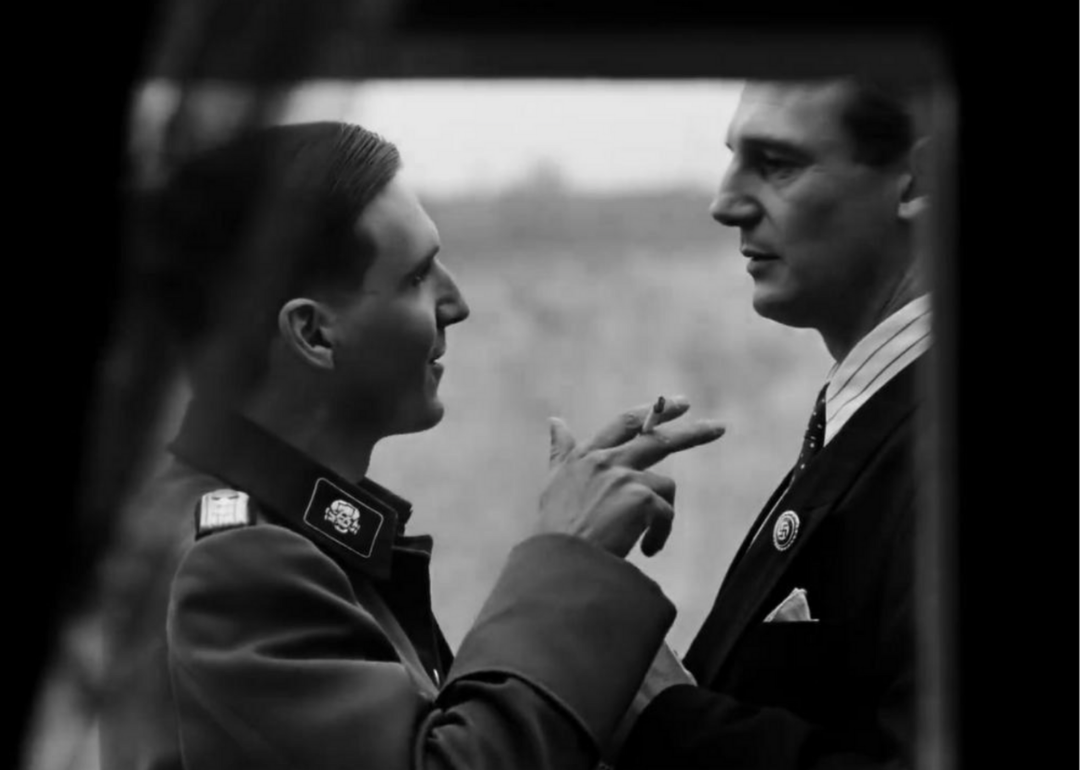
95 / 100
Universal Pictures/Amblin Entertainment
#6. Schindler’s List (1993)
– Director: Steven Spielberg
– Stacker score: 95.8
– Metascore: 94
– IMDb user rating: 9
– Runtime: 195 minutes
While Steven Spielberg was no stranger to serious fare by the early 1990s, he nevertheless caught audiences by surprise when he released this award-winning drama. It tells the true story of Oskar Schindler, a German industrialist who ultimately saved 1,100 Jewish lives during the Holocaust. Spielberg forewent a salary when making the film, and donated the profits to a charitable foundation. The movie was nominated for 12 Academy Awards, winning seven, including Best Picture, Best Director, and Best Adapted Screenplay.
You may also like: Biggest box office bombs of all time
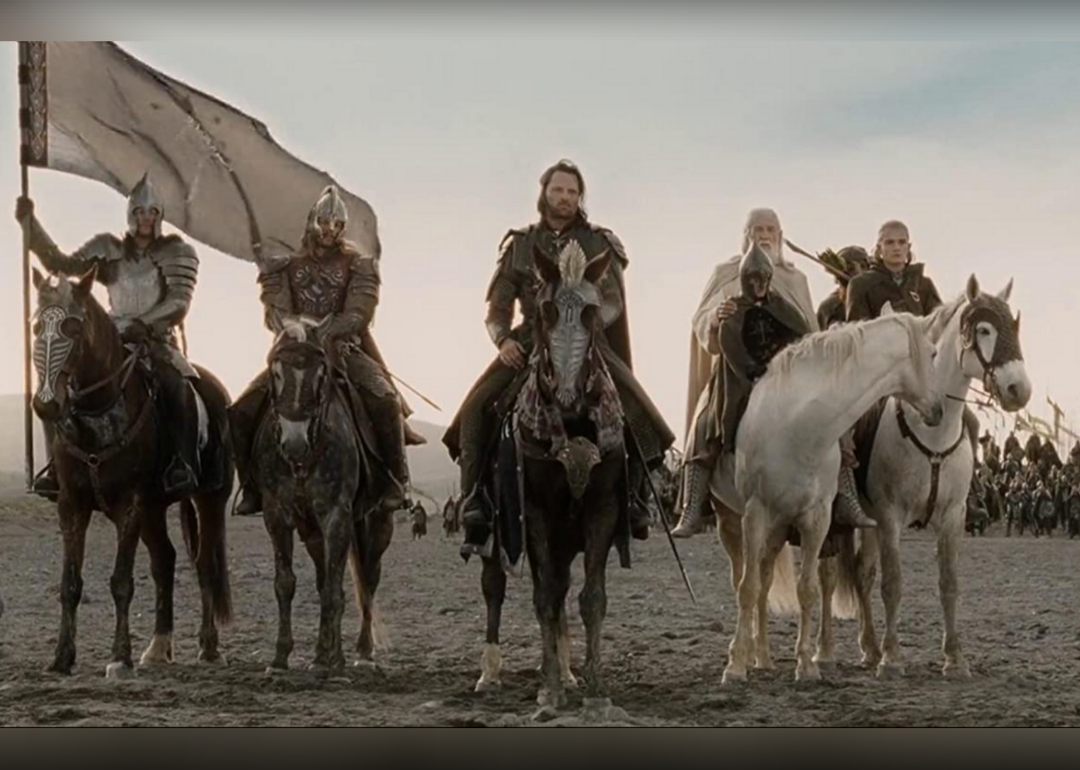
96 / 100
New Line Cinema
#5. The Lord of the Rings: The Return of the King (2003)
– Director: Peter Jackson
– Stacker score: 95.8
– Metascore: 94
– IMDb user rating: 9
– Runtime: 201 minutes
In the final installment of Peter Jackson’s Lord of the Rings trilogy, the forces of good and evil do battle over the fate of Middle Earth, while Frodo reaches the last leg of his journey. Not only did the film earn more than $1 billion dollars at the box office, but it won 11 Academy Awards out of 11 nominations, giving it the highest perfect score in Oscar history. It also tied with “Ben-Hur” and “Titanic” for the film with the most Oscar wins.
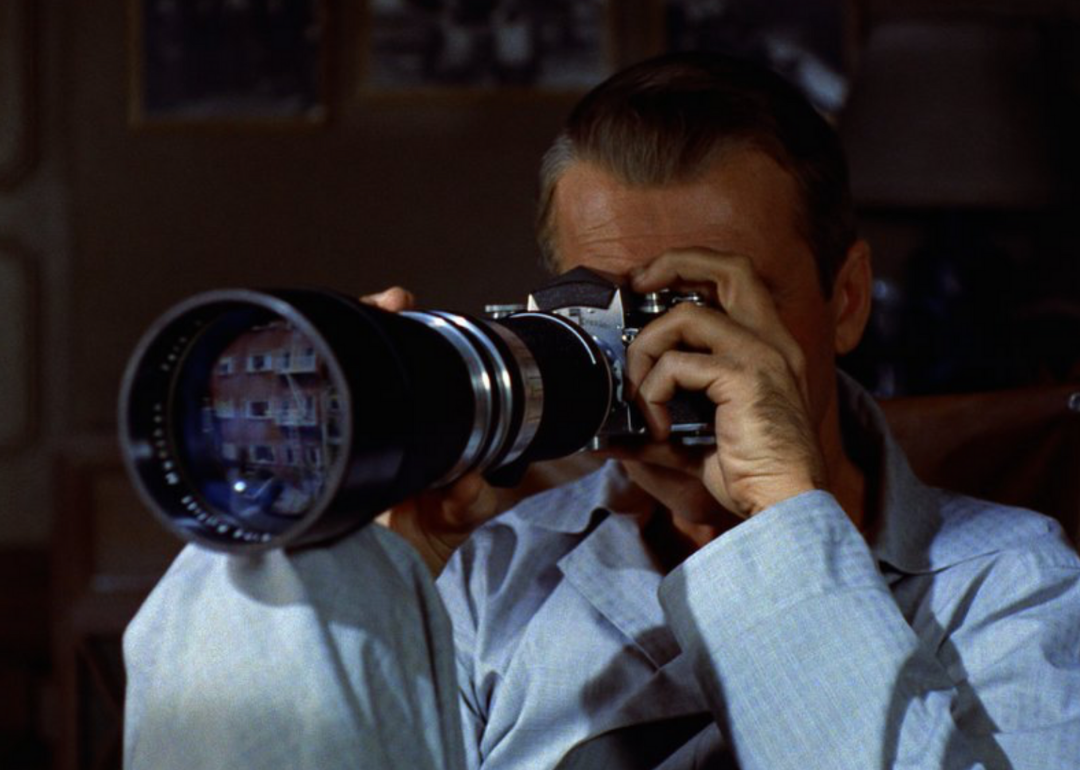
97 / 100
Paramount Pictures
#4. Rear Window (1954)
– Director: Alfred Hitchcock
– Stacker score: 96.4
– Metascore: 100
– IMDb user rating: 8.5
– Runtime: 112 minutes
In addition to striking the perfect balance of intrigue and suspense, this 1954 Hitchcock film endures through its perennial relatability. After all, who hasn’t wondered what their neighbor might be up to behind closed doors? In “Rear Window,” the answer is potentially murder. Or is a wheelchair-bound James Stewart simply letting his paranoia get the best of him? To say anything more is to spoil the fun of watching this classic for the first time. The movie earned four Academy Award nominations, including Best Director and Best Adapted Screenplay.
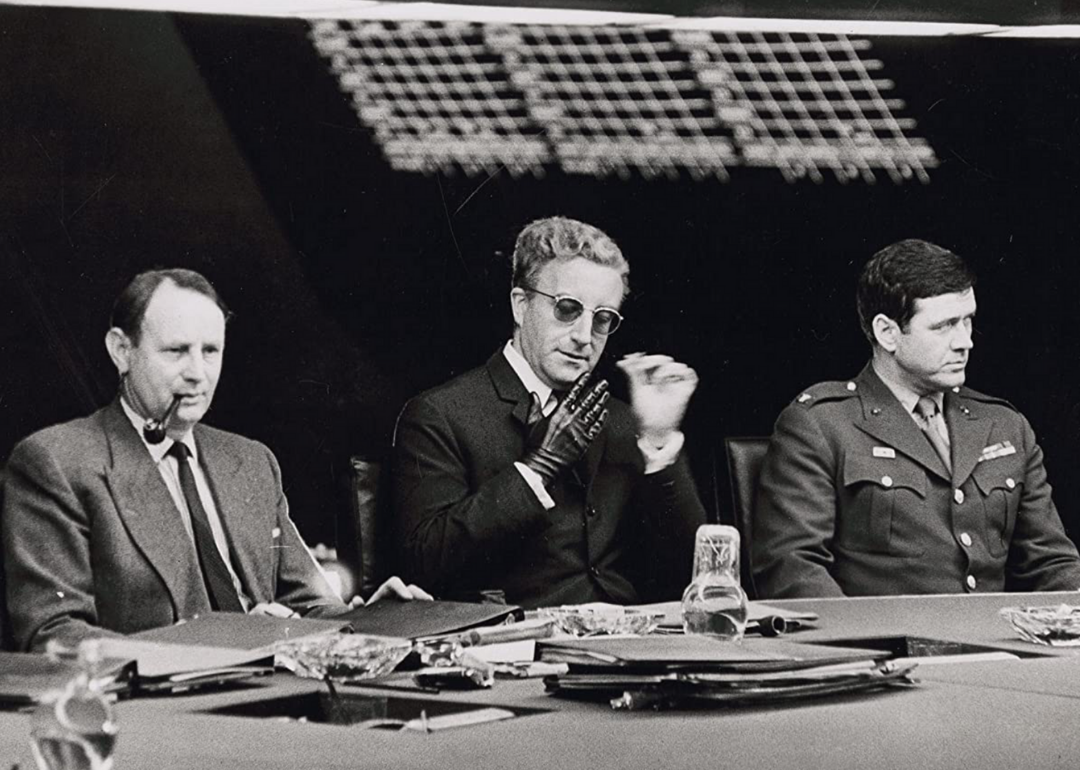
98 / 100
Columbia Pictures Corporation
#17. Dr. Strangelove or: How I Learned to Stop Worrying and Love the Bomb (1964)
– Director: Stanley Kubrick
– Stacker score: 94.3
– Metascore: 97
– IMDb user rating: 8.4
– Runtime: 95 minutes
Acclaimed director Stanley Kubrick enters the list with 1964’s “Dr. Strangelove or: How I Learned to Stop Worrying and Love the Bomb,” a movie that puts the “dark” in dark comedy. In the film, a series of miscommunications lead to a nuclear showdown between the world’s most powerful nations. As intentionally ridiculous as the movie is, an early version of the script was even more so, with aliens watching the whole fiasco from space. The film garnered four Academy Award nominations, including Best Picture, Best Actor, and Best Director.
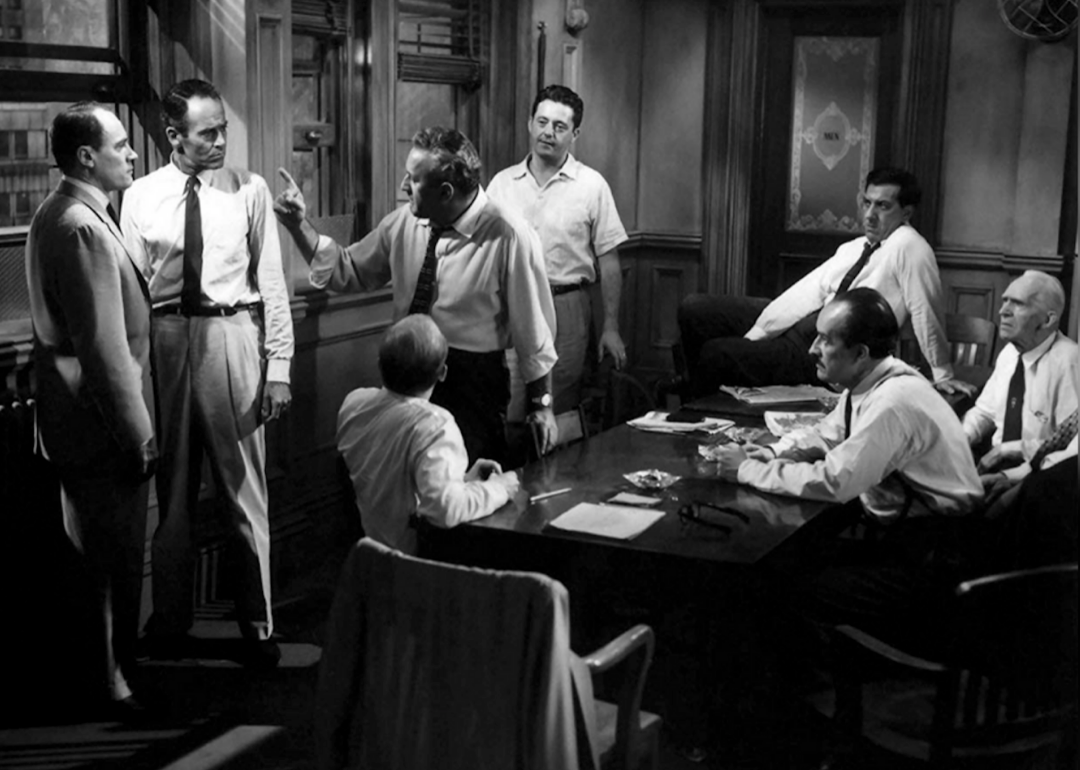
99 / 100
Orion-Nova Productions
#2. 12 Angry Men (1957)
– Director: Sidney Lumet
– Stacker score: 96.9
– Metascore: 96
– IMDb user rating: 9
– Runtime: 96 minutes
In this taut 1957 drama from Sidney Lumet, 12 jurors determine the fate of a suspected murderer. What starts as an open-and-shut case becomes something far more complex, as a lone holdout convinces the others that the defendant might not be guilty after all. As the debate unfolds, each juror’s own respective prejudices bubble to the surface, with all the action taking place inside the jury room. In 2007, the film was chosen for preservation in the National Film Registry by the Library of Congress.
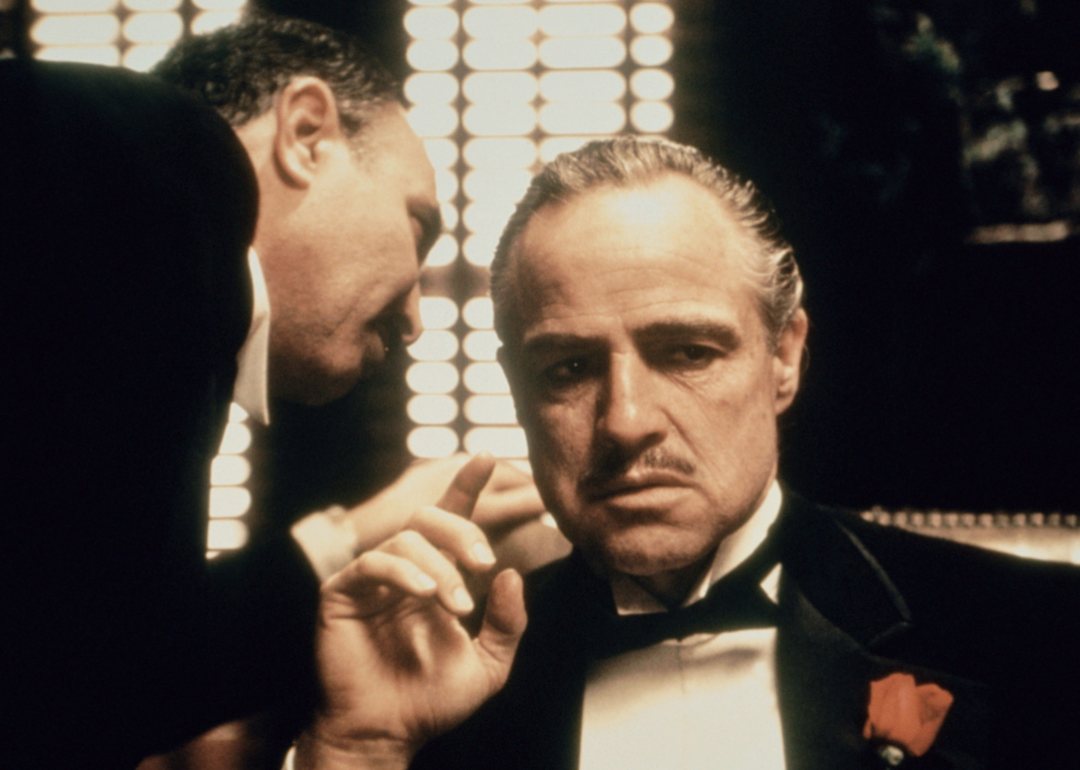
100 / 100
Paramount Pictures
#1. The Godfather (1972)
– Director: Francis Ford Coppola
– Stacker score: 100
– Metascore: 100
– IMDb user rating: 9.2
– Runtime: 175 minutes
Stanley Kubrick himself used to reluctantly theorize that “The Godfather” was the greatest movie ever made, and most audiences and critics agree. Chronicling the exploits of the Corleone crime family, this 1972 masterpiece delivers everything one could ask for in a film, fusing elements of drama, violence, and suspense to absolute perfection. Indeed, there’s virtually no aspect of “The Godfather” that doesn’t remain iconic to this day, hence its status as the best movie of all time. The film had a huge turnout at the 45th Academy Awards, winning Best Picture, Best Actor (Marlon Brando), and Best Adapted Screenplay.
Audiences have been enraptured by cinema since 1895 when Auguste and Louis Lumière used a cinematograph machine to project moving images onto a screen. Naturally, movies have come a long way since the early days of 50-second reels, resulting in a rich variety of styles—many of which are easily streamed right from home. Every cinematic era has put forth its respective slate of timeless masterpieces.
The best movies arguably represent the pinnacle of artistic achievement in the modern era and that makes them worth celebrating over and over again. To explore the 100 best films of all time, Stacker analyzed IMDb ratings and Metascores to create a score equally weighting the two. To qualify, each movie needed at least 20,000 votes on IMDb and a Metascore. Ties were broken by IMDb user votes. Films of all languages and from all countries were considered.
Great films usually deliver the goods on multiple fronts. That means everything from the writing to the music to the acting is memorable, if not downright iconic. At the end of the day, of course, there is no one solitary answer as to what makes a great movie—just like there is no one type of great film.
Counting down from #100, here are the best movies of all time.
You may also like: Why these famous films were banned around the globe
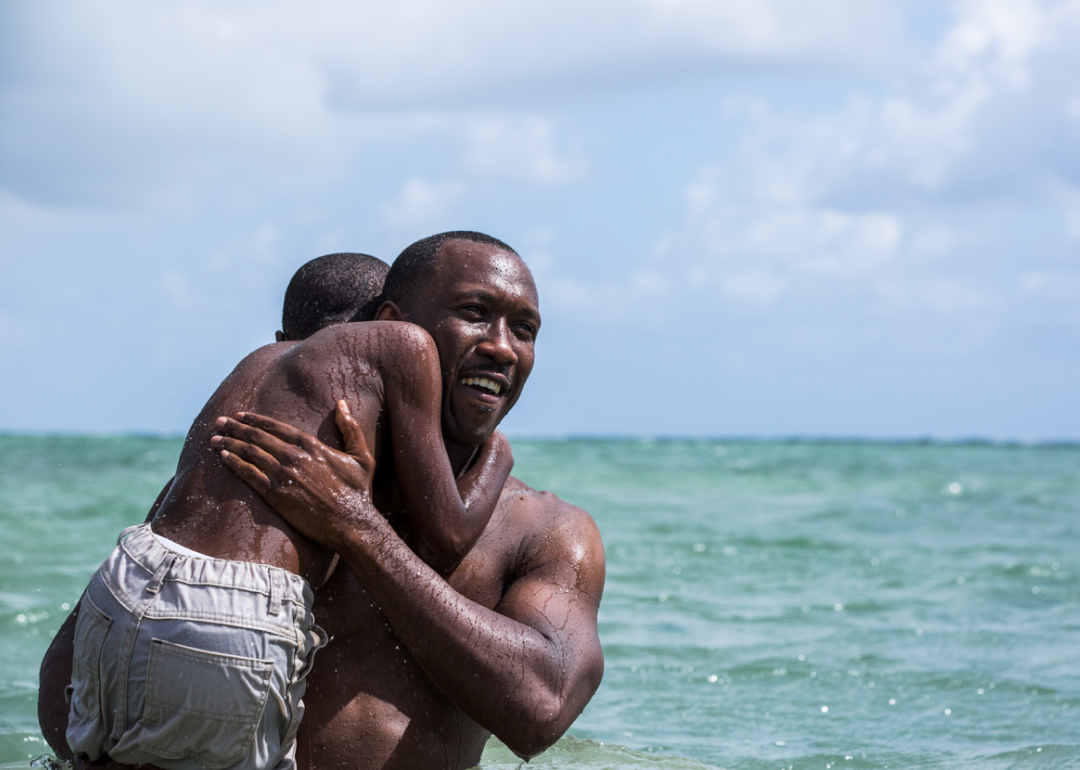
1 / 100
A24
#100. Moonlight (2016)
– Director: Barry Jenkins
– Stacker score: 90.1
– Metascore: 99
– IMDb user rating: 7.4
– Runtime: 111 minutes
Divided into three segments, this prescient drama follows young Chiron (Ashton Sanders) on his path to self-discovery. Brought to life with vivid color and precision, the story grapples with themes of poverty and identity. “Moonlight” won three Academy Awards, including Best Picture. Mahershala Ali made history as the first Muslim to win an acting Oscar.
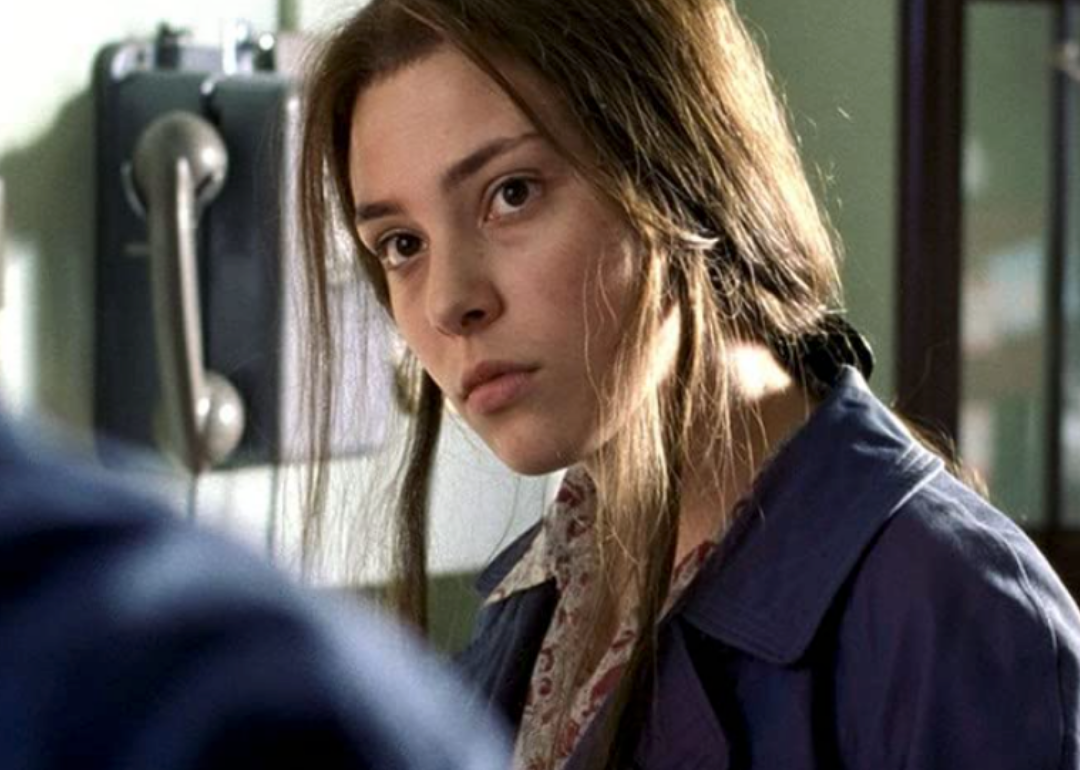
2 / 100
BiBi Film
#99. The Best of Youth (2003)
– Director: Marco Tullio Giordana
– Stacker score: 90.6
– Metascore: 89
– IMDb user rating: 8.5
– Runtime: 366 minutes
“The Best of Youth” follows middle-class Italian brothers Nicola (Luigi Lo Cascio) and Matteo (Alessio Boni) over nearly 40 years, as they come of age and search for meaning amid post-World War II upheaval. Because of its lengthy runtime, the film was released as a pair of three-hour films. It won the “Prize Un Certain Regard” at the 2003 Cannes Film Festival. As film critic Peter Bradshaw notes, “The Best of Youth” is a notable example of Italian films that track history through an extensive family saga. Other examples include “The Leopard” and “Rocco and His Brothers.”
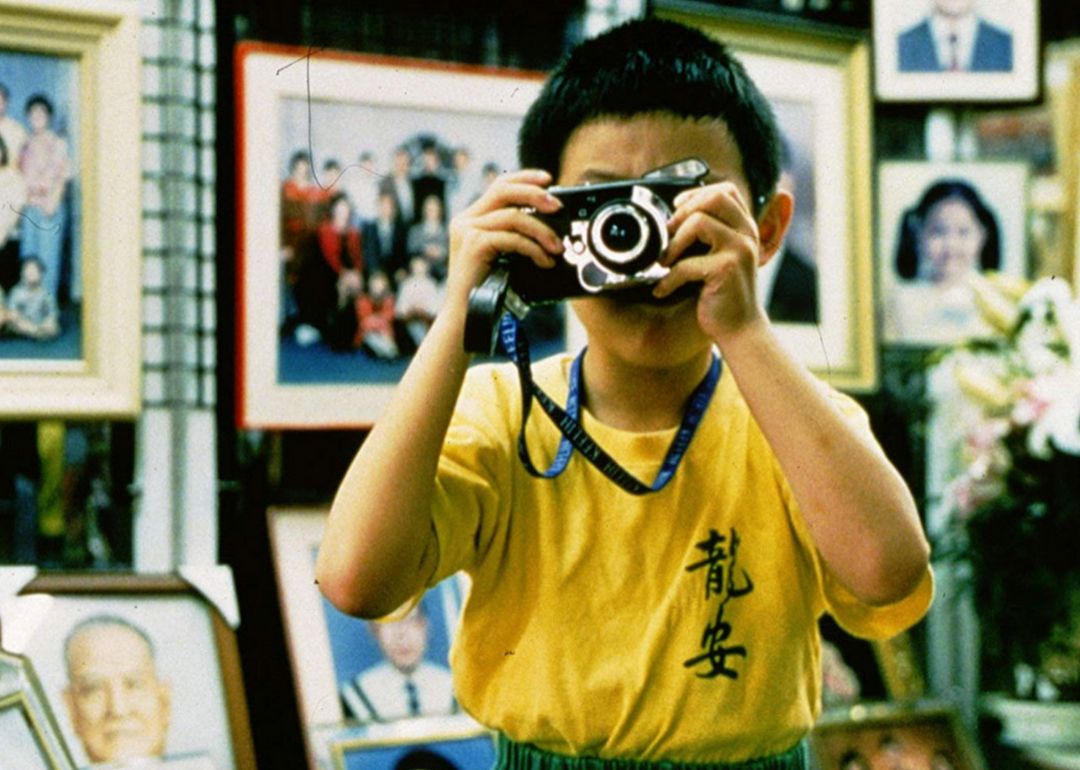
3 / 100
1+2 Seisaku Iinkai
#98. Yi Yi (2000)
– Director: Edward Yang
– Stacker score: 90.6
– Metascore: 93
– IMDb user rating: 8.1
– Runtime: 173 minutes
This generational Taiwanese drama follows the plight of engineer NJ (Wu Nien-jen), and how his actions affect three generations of his middle-class family. Director Edward Yang received particular acclaim for “Yi Yi,” taking home Best Director at the 2000 Cannes Film Festival for the film. Its Chinese title can be translated to the phrase “one by one,” or “one after another.”
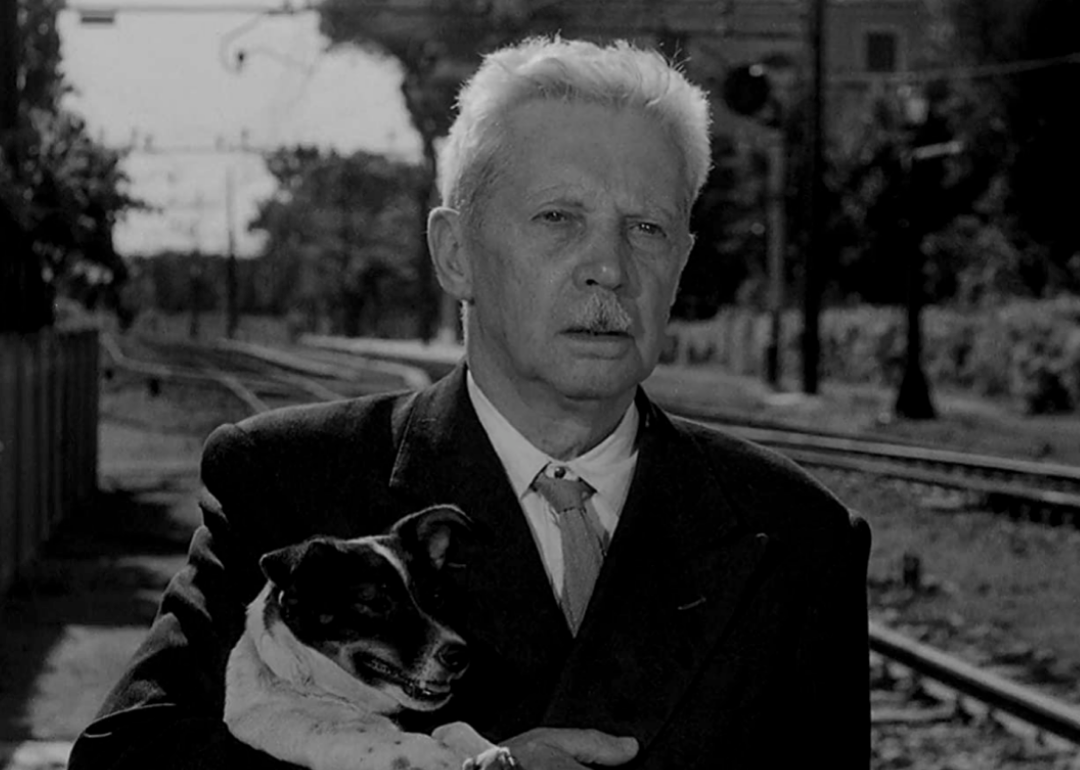
4 / 100
Rizzoli Film
#97. Umberto D. (1952)
– Director: Vittorio De Sica
– Stacker score: 90.6
– Metascore: 92
– IMDb user rating: 8.2
– Runtime: 89 minutes
In this Italian film, elderly Rome resident Umberto Domenico Ferrari (Carlo Battisti) and his beloved dog Flike face eviction and the prospect of poverty. Desperate to evade threats from his landlady (Lina Gennari), Domenico fakes illness in order to stay at his hospital, leaving Flike behind with the landlady’s compassionate maid. Although Italians found the movie too critical so soon after World War II, it’s since attained a legacy as one of the great Italian films.
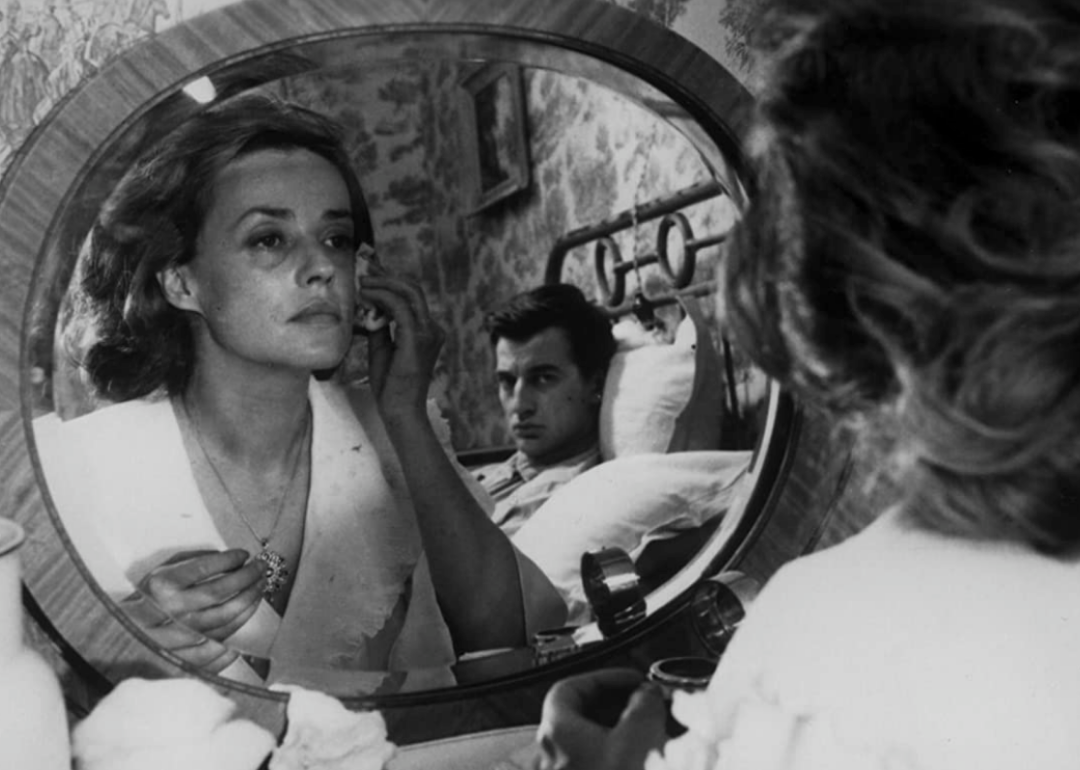
5 / 100
Cinédis
#96. Jules and Jim (1962)
– Director: François Truffaut
– Stacker score: 90.6
– Metascore: 97
– IMDb user rating: 7.7
– Runtime: 105 minutes
This prime example of French new wave cinema tells the story of an ill-fated love triangle between Frenchman Jim (Henri Serre), his Austrian friend Jules (Oskar Werner), and Jules’ eventual wife Catherine (Jeanne Moreau). “Jules and Jim” is loosely based on the 1953 autobiographical novel by Henri-Pierre Roché, and Truffaut befriended the author before his eventual death. The movie was an inspiration for Martin Scorsese when making “Goodfellas,” as he admired its “punk attitude.”
You may also like: 50 best WWII movies of all time
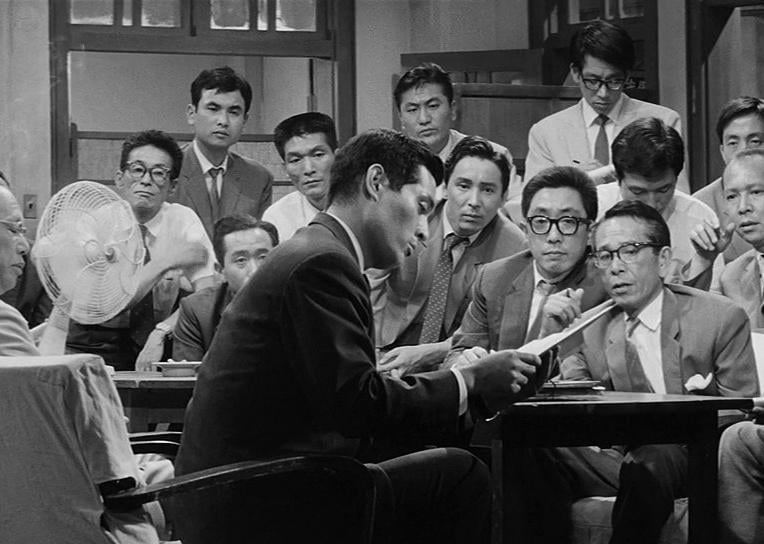
6 / 100
Kurosawa Production Co.
#95. High and Low (1963)
– Director: Akira Kurosawa
– Stacker score: 90.6
– Metascore: 90
– IMDb user rating: 8.4
– Runtime: 143 minutes
In “High and Low,” a Japanese executive’s comfortable life is upended when his chauffeur’s son is kidnapped and held for ransom. Soon, his entire family is under threat. The movie is loosely based on the Ed McBain novel “King’s Ransom,” and stands as a strong example of a Japanese police procedural. Criterion describes the movie as “a diabolical treatise on contemporary Japanese society.”
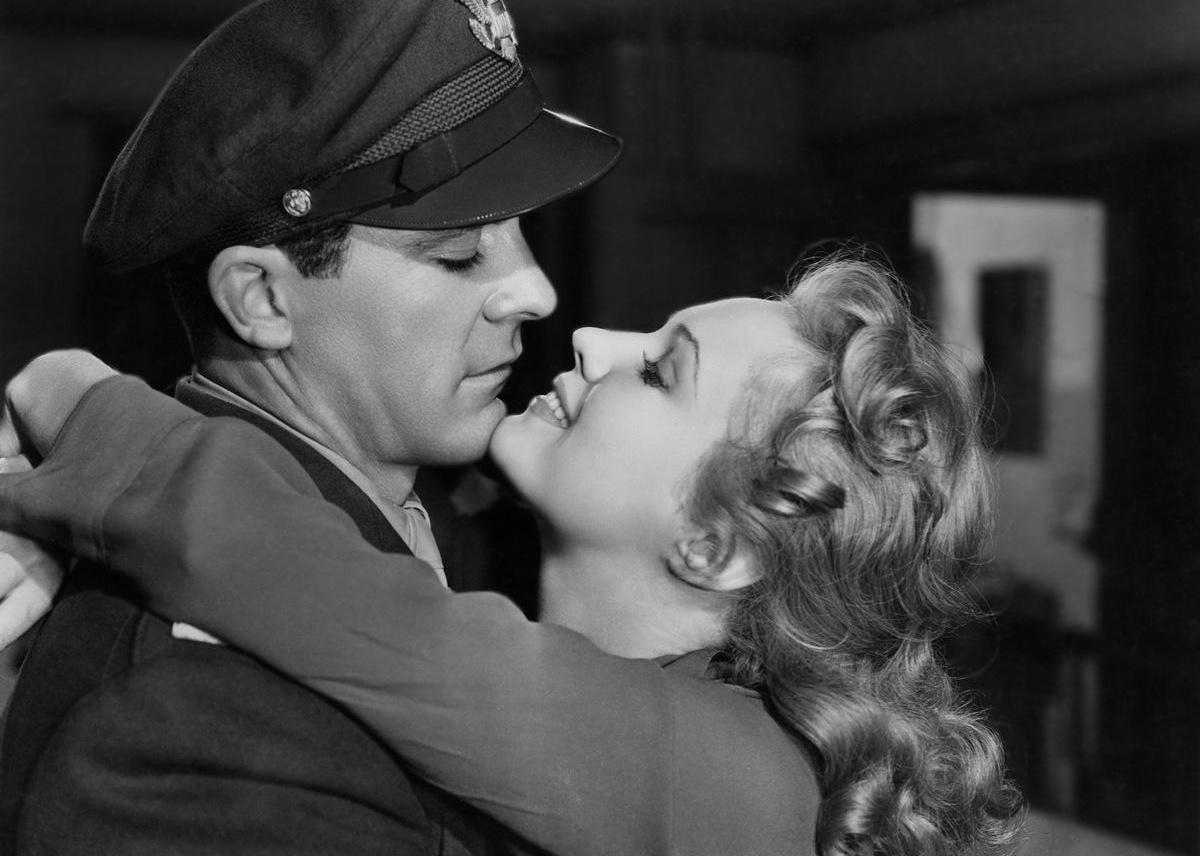
7 / 100
The Samuel Goldwyn Company
#94. The Best Years of Our Lives (1946)
– Director: William Wyler
– Stacker score: 90.6
– Metascore: 93
– IMDb user rating: 8.1
– Runtime: 170 minutes
In this harrowing 1946 drama, three soldiers struggle to reintegrate into society after returning home from serving in World War II. “The Best Years of Our Lives” was directed by William Wyler, a former Air Force major whose previous war film, “Mrs. Miniver,” is held in similarly high regard. Despite the grim and depressing tone, “The Best Years of Our Lives” was the biggest box office success since 1939’s “Gone With the Wind.” The picture was also one of the first 25 films selected by the Library of Congress for preservation in the National Film Registry in 1989.
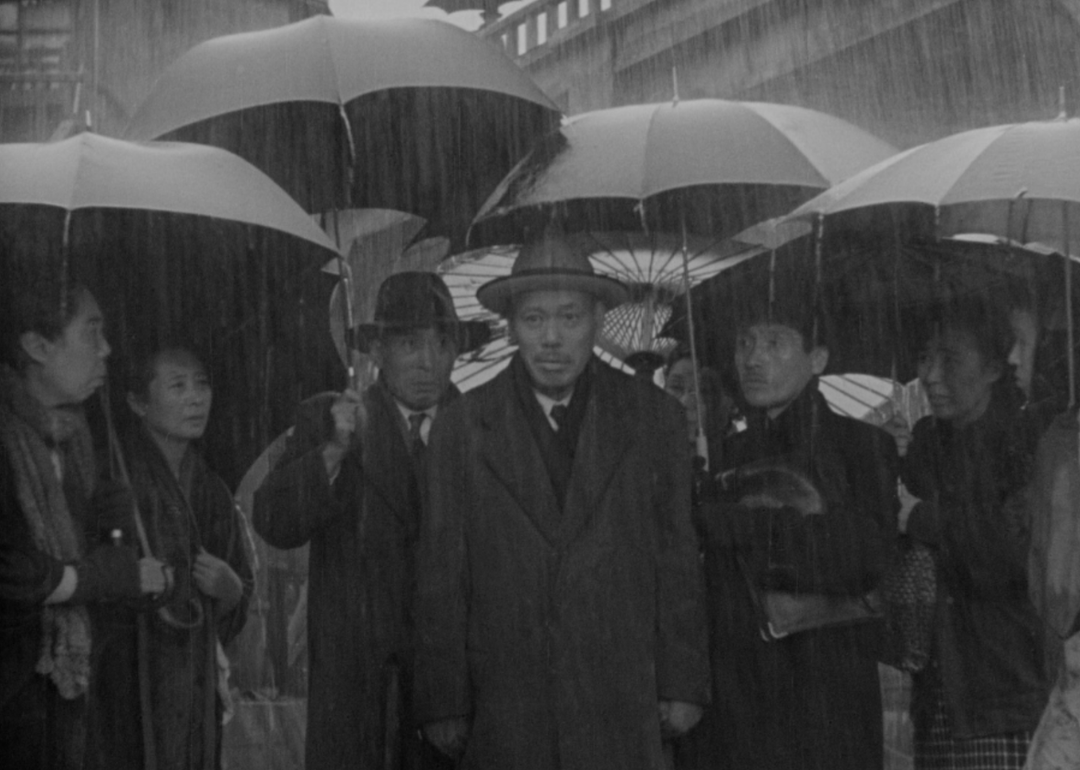
8 / 100
Toho Company
#93. Ikiru (1952)
– Director: Akira Kurosawa
– Stacker score: 90.6
– Metascore: 91
– IMDb user rating: 8.3
– Runtime: 143 minutes
In “Ikiru,” a Tokyo bureaucrat searches for meaning after being diagnosed with terminal cancer and struggling to maintain a relationship with his son. The film was partially inspired by Russian writer Leo Tolstoy’s novella “The Death of Ivan Ilyich.” However, Kurosawa also uses “Ikiru” to critique issues like contemporary Japanese bureaucracy and the decay of the traditional Japanese family structure, while remaining a poignant exploration of what it means to be alive.
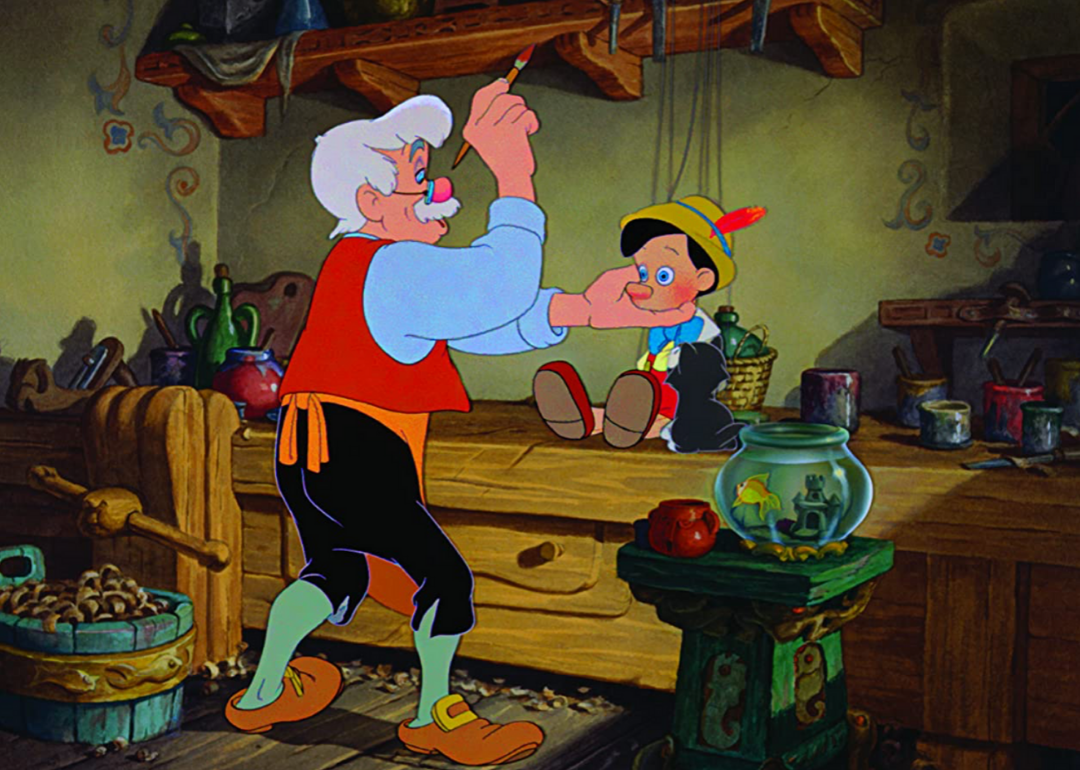
9 / 100
Walt Disney Studios
#92. Pinocchio (1940)
– Directors: Norman Ferguson, T. Hee, Wilfred Jackson, Jack Kinney, Hamilton Luske, Bill Roberts, Ben Sharpsteen
– Stacker score: 90.6
– Metascore: 99
– IMDb user rating: 7.5
– Runtime: 88 minutes
With a 2022 debut of the live-action remake, it’s the perfect time to revisit this original Disney classic. The studio’s second full-length animated effort, “Pinocchio” was something of a financial disappointment upon its initial release. Even so, the movie was one of the earliest animated features to win a major Oscar, including Best Music, Original Score and Best Music, Original Song. Thanks to theatrical re-releases and home video rentals and sales, the film eventually grossed more than $100 million.
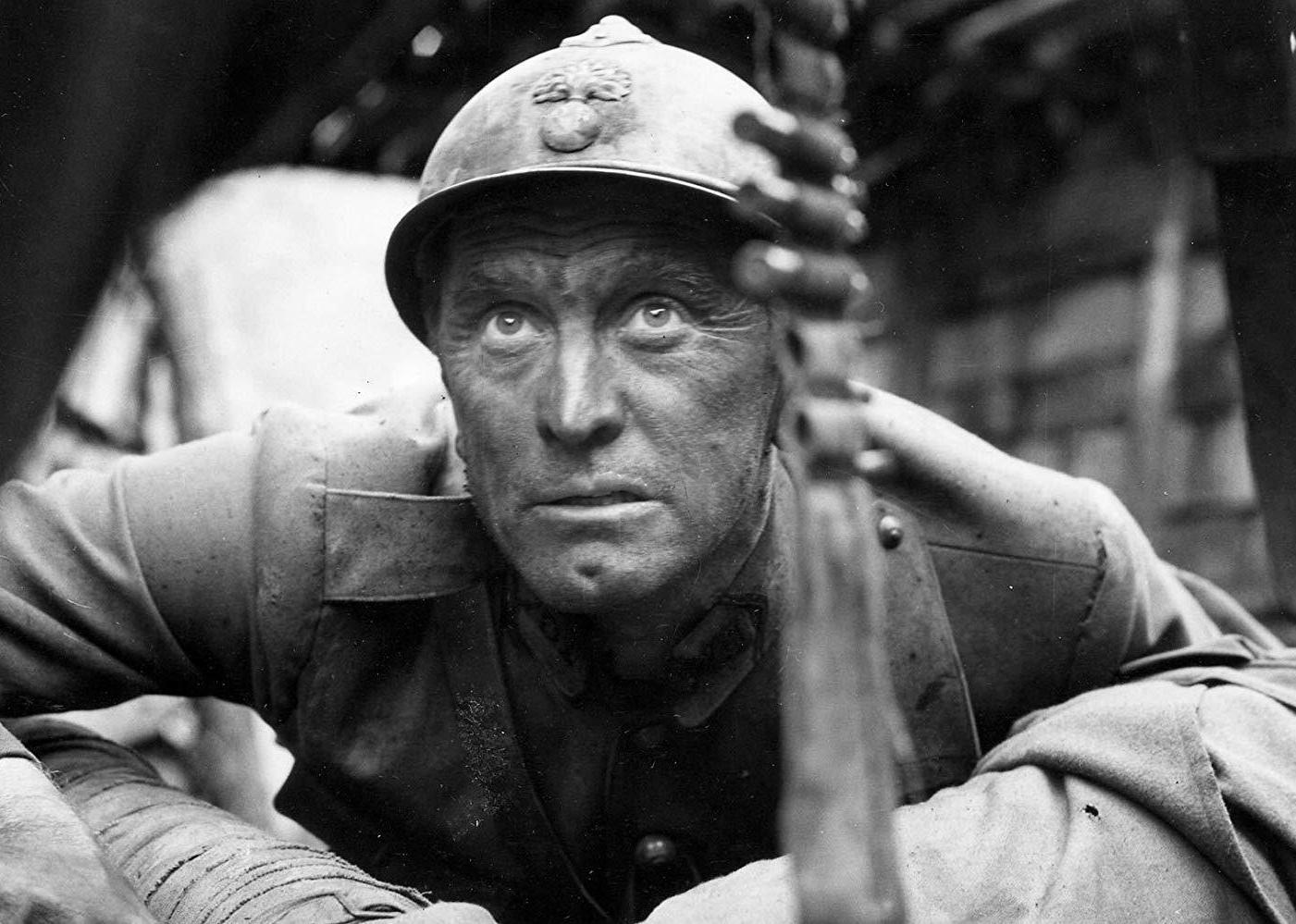
10 / 100
Bryna Productions
#91. Paths of Glory (1957)
– Director: Stanley Kubrick
– Stacker score: 90.6
– Metascore: 90
– IMDb user rating: 8.4
– Runtime: 88 minutes
Although iconic director Stanley Kubrick addressed themes of war in many of his films, he arguably addressed it most potently in 1957’s “Paths of Glory.” The anti-war drama stars Kirk Douglas as Colonel Dax, a French commanding officer who defends his soldiers from martial charges of cowardace after they refuse to partake in a suicide mission. Loosely based on the true story of the Souain corporals affair of 1915, “Paths of Glory” was initially censored in several places—such as Switzerland and France—for its critique of the casual cruelty of war.
You may also like: Can you guess which iconic movie these scenes are from?
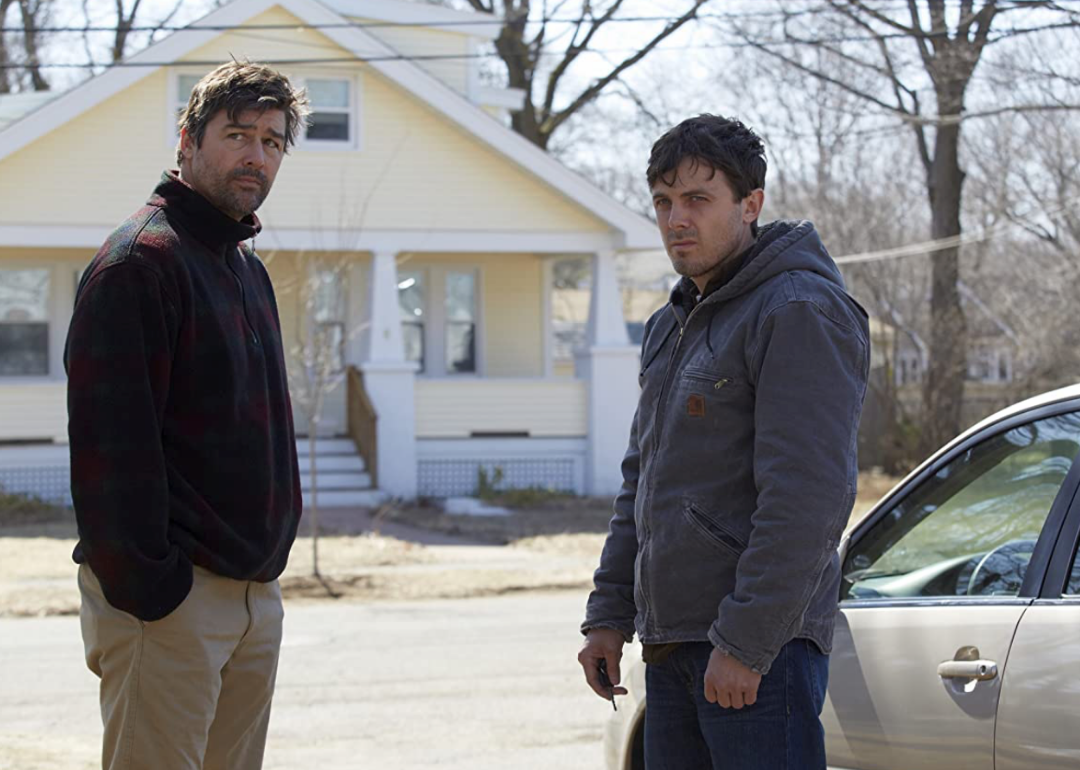
11 / 100
Amazon Studios
#90. Manchester by the Sea (2016)
– Director: Kenneth Lonergan
– Stacker score: 90.6
– Metascore: 96
– IMDb user rating: 7.8
– Runtime: 137 minutes
Dramas don’t get much more somber than this one from acclaimed writer and director Kenneth Lonergan. In the film, a brooding handyman (Casey Affleck) is given guardianship over his 16-year-old nephew and thereby forced to confront some traumatic demons from his own past. Michelle Williams co-stars and turns in one of her finest performances. The film took home two Academy Awards, including one for Affleck as Best Actor, as well as Best Original Screenplay.
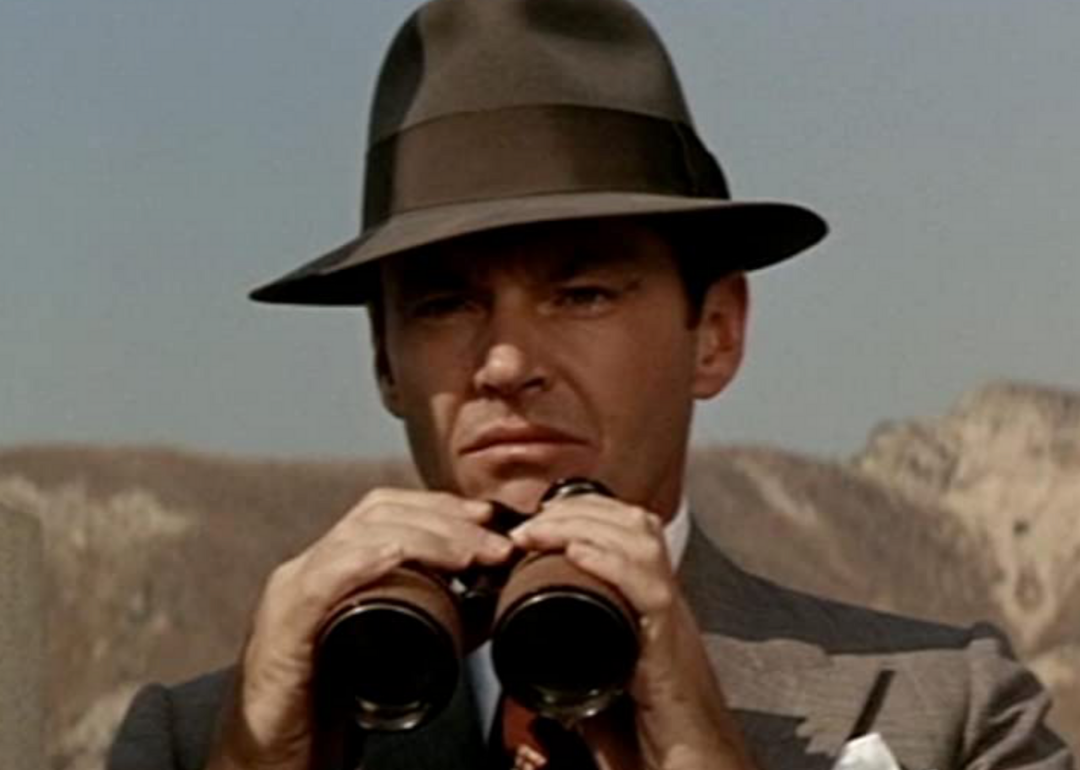
12 / 100
Paramount Pictures
#89. Chinatown (1974)
– Director: Roman Polanski
– Stacker score: 90.6
– Metascore: 92
– IMDb user rating: 8.2
– Runtime: 130 minutes
This noir-ish thriller takes place in 1937 and centers on a private investigator J.J. “Jake” Gittes (Jack Nicholson), who gets embroiled in a vicious scheme involving the water supply in Los Angeles. Frequently pointed to as an absolute masterclass in filmmaking, the movie delivers taut writing, exceptional acting, and an ending that goes straight to the bone. Faye Dunaway and John Huston co-star. Despite garnering an impressive 11 Oscar nominations, the film only took home one, for Best Original Screenplay.
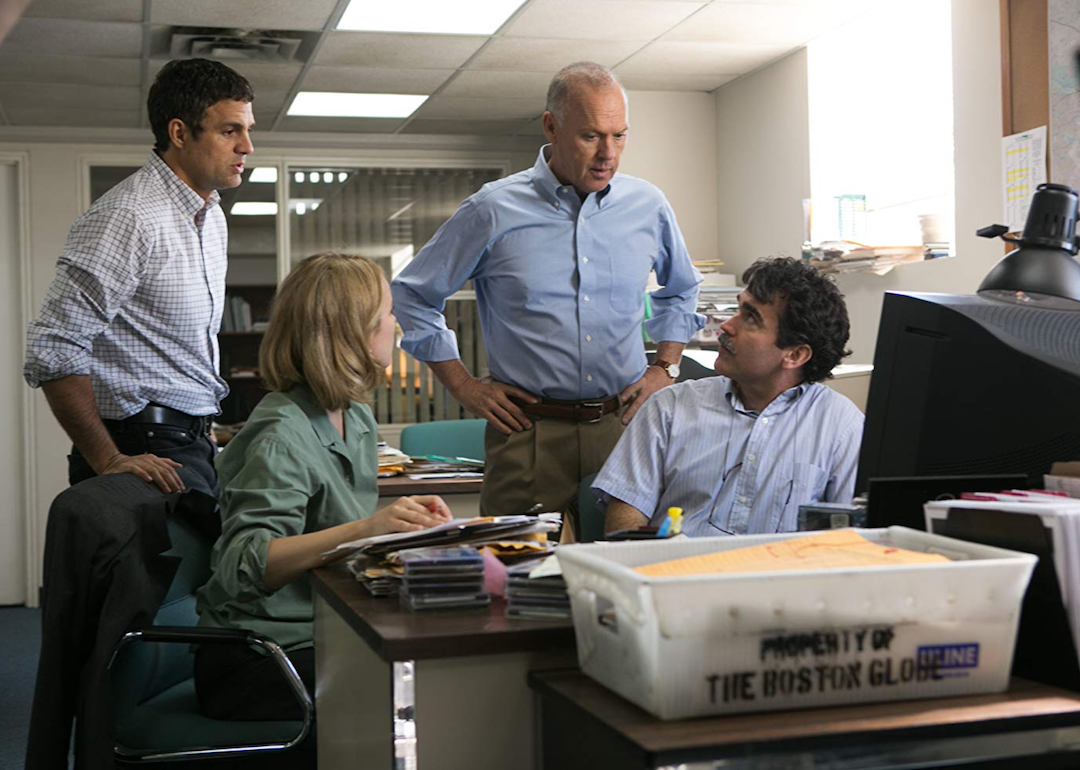
13 / 100
Participant Media
#88. Spotlight (2015)
– Director: Tom McCarthy
– Stacker score: 90.6
– Metascore: 93
– IMDb user rating: 8.1
– Runtime: 129 minutes
In this award-winning drama, Boston Globe reporters uncover a child abuse scandal involving the local Catholic archdiocese. Not only is the film based on a true story, but a number of real-life Boston Globe journalists were on hand as consultants. Reportedly, Walter Robinson even said of his on-screen counterpart, “If Michael Keaton robbed a bank, the police would quickly have me in handcuffs.” The film received six Academy Award nominations, stealing away with Best Picture and Best Original Screenplay.
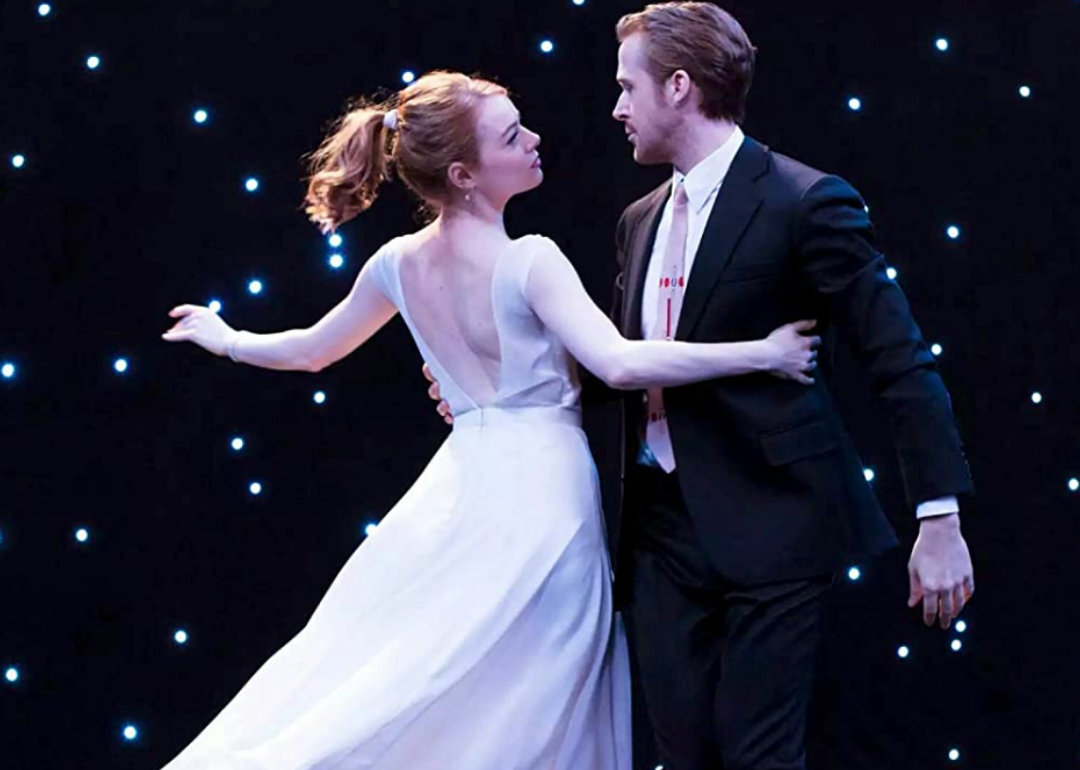
14 / 100
Summit Entertainment
#87. La La Land (2016)
– Director: Damien Chazelle
– Stacker score: 90.6
– Metascore: 94
– IMDb user rating: 8
– Runtime: 128 minutes
Modernizing the traditional musical, “La La Land” takes place in the city of dreams, and tells the story of two aspiring artists, one a musician (Ryan Gosling) and the other an actress (Emma Stone). Kicking the film off on a high note is a six-minute song-and-dance number that goes down in the middle of freeway traffic. Filming the scene took two days and involved stitching three consecutive shots together to create what appeared to be a single take. Among the movie’s 14 Academy Award nominations, Stone took home the Best Actress Oscar for her portrayal in the film, and Damien Chazelle for Best Director, making him the youngest winner at 32.
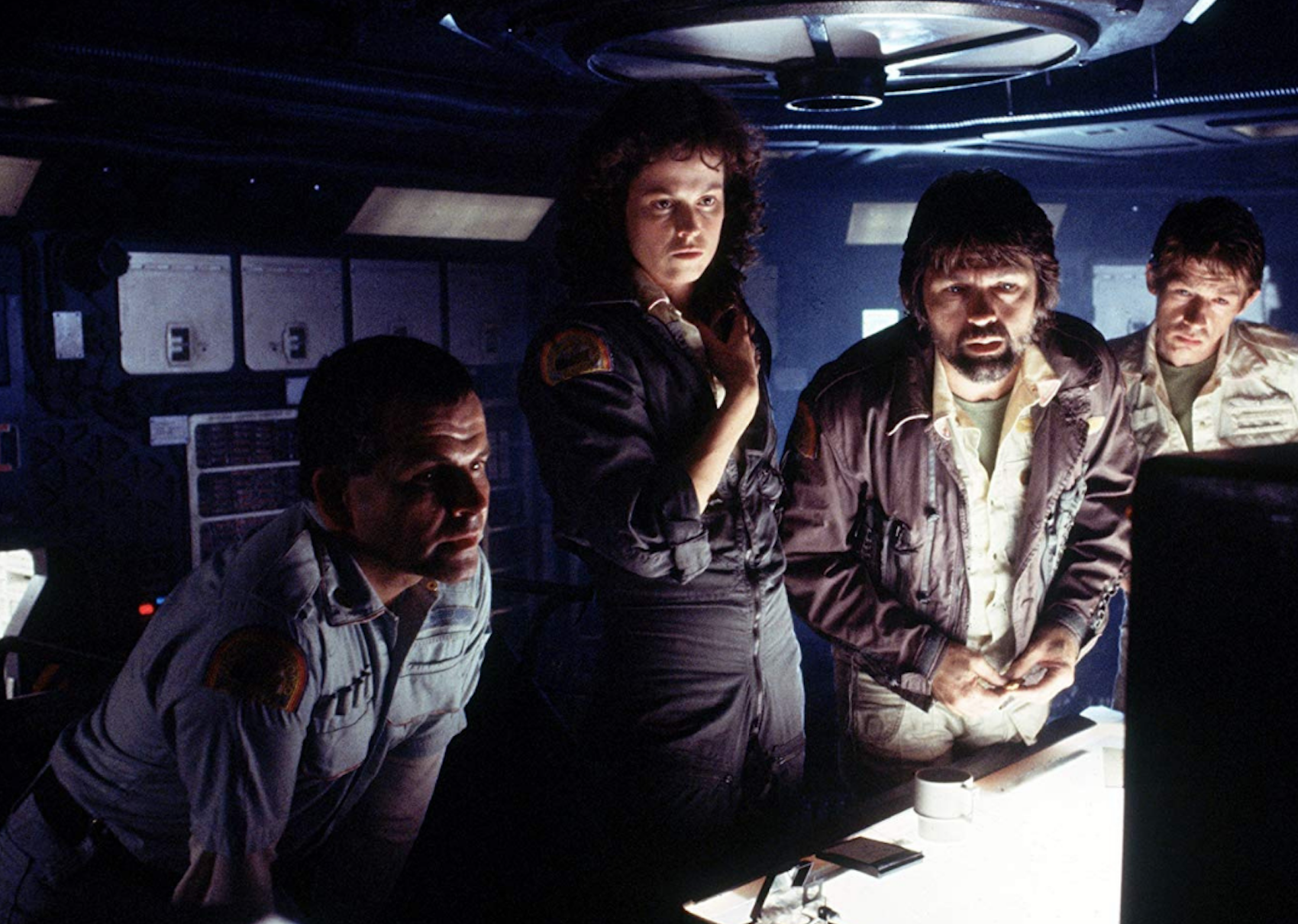
15 / 100
Twentieth Century-Fox Productions
#86. Alien (1979)
– Director: Ridley Scott
– Stacker score: 90.6
– Metascore: 89
– IMDb user rating: 8.5
– Runtime: 117 minutes
The sparring between warrant officer Ellen Ripley (Sigourney Weaver) and the Alien spawned a franchise that included three sequels, two crossover films, and three prequels. “Alien: Awakening” is a long-gestating follow-up prequel. The otherworldly genesis tale—and all its associated hijinks—has all the ingredients for a riveting, sci-fi action saga. In 2002, the movie was selected by the Library of Congress for preservation in the National Film Registry.
You may also like: 100 best fantasy movies of all time
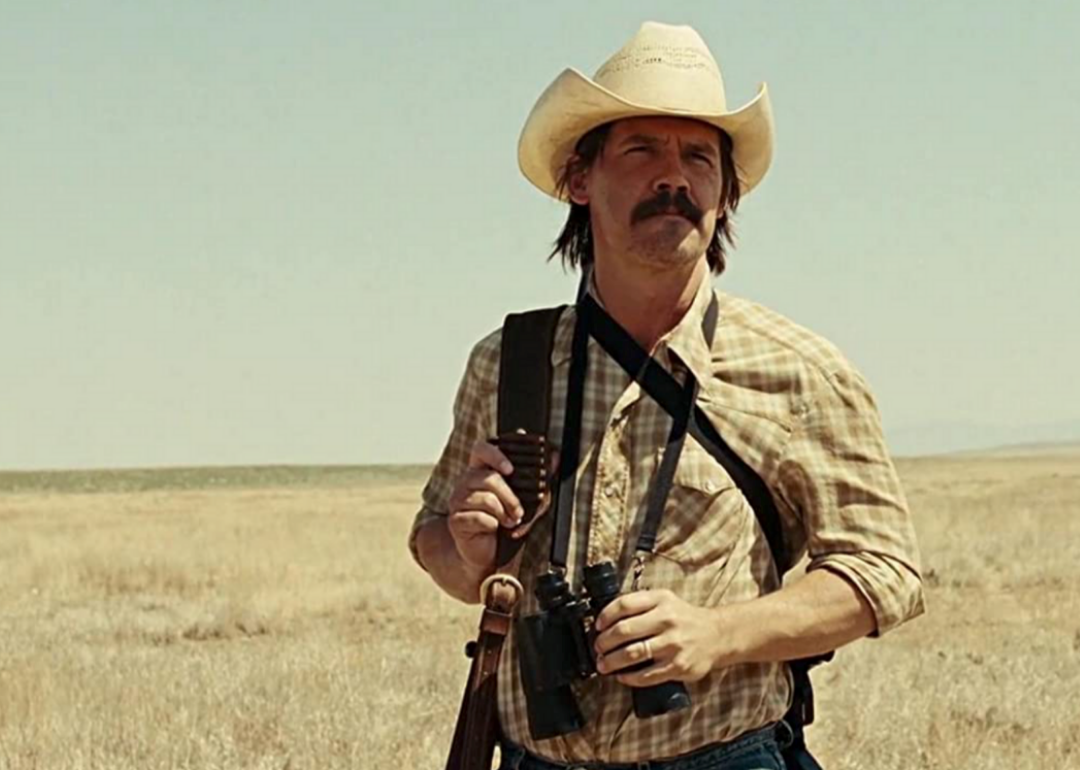
16 / 100
Paramount Vantage
#85. No Country for Old Men (2007)
– Directors: Ethan Coen, Joel Coen
– Stacker score: 90.6
– Metascore: 92
– IMDb user rating: 8.2
– Runtime: 122 minutes
Filmmaking duo the Coen brothers didn’t let the dense prose of Cormac McCarthy inhibit them from faithfully adapting “No Country for Old Men.” In the 2007 film, a man (Josh Brolin) comes upon $2 million in missing drug money and soon finds himself being hunted by a ruthless killer (Javier Bardem). For the most part, the movie stays true to the source material, while terrific performances bring every character even further to life. “No Country for Old Men” won four Oscars at the 80th Academy Awards, including Best Picture.
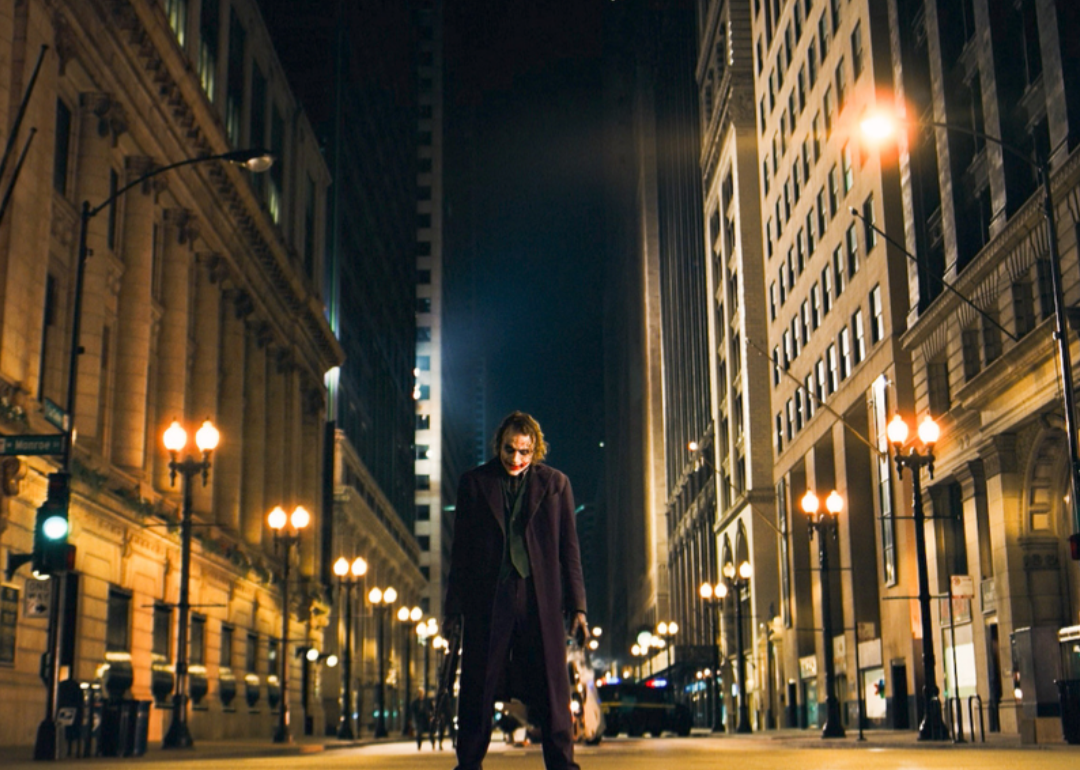
#84. The Dark Knight (2008)
– Director: Christopher Nolan
– Stacker score: 90.6
– Metascore: 84
– IMDb user rating: 9
– Runtime: 152 minutes
More than just the gold standard of comic book adaptations, “The Dark Knight” holds the #4 spot on the list of IMDb’s Highest Rated Titles. As the second film in Christopher Nolan’s heralded Dark Knight trilogy, it sees Christian Bale returning as the caped crusader and squaring off against Heath Ledger’s Joker. According to legend, Ledger drew inspiration from bands like The Sex Pistols and movies like “A Clockwork Orange” while preparing for the role. Among its eight Oscar nominations, “The Dark Knight” took home the awards for Best Sound Editing and Best Supporting Actor, posthumously awarded to Ledger.
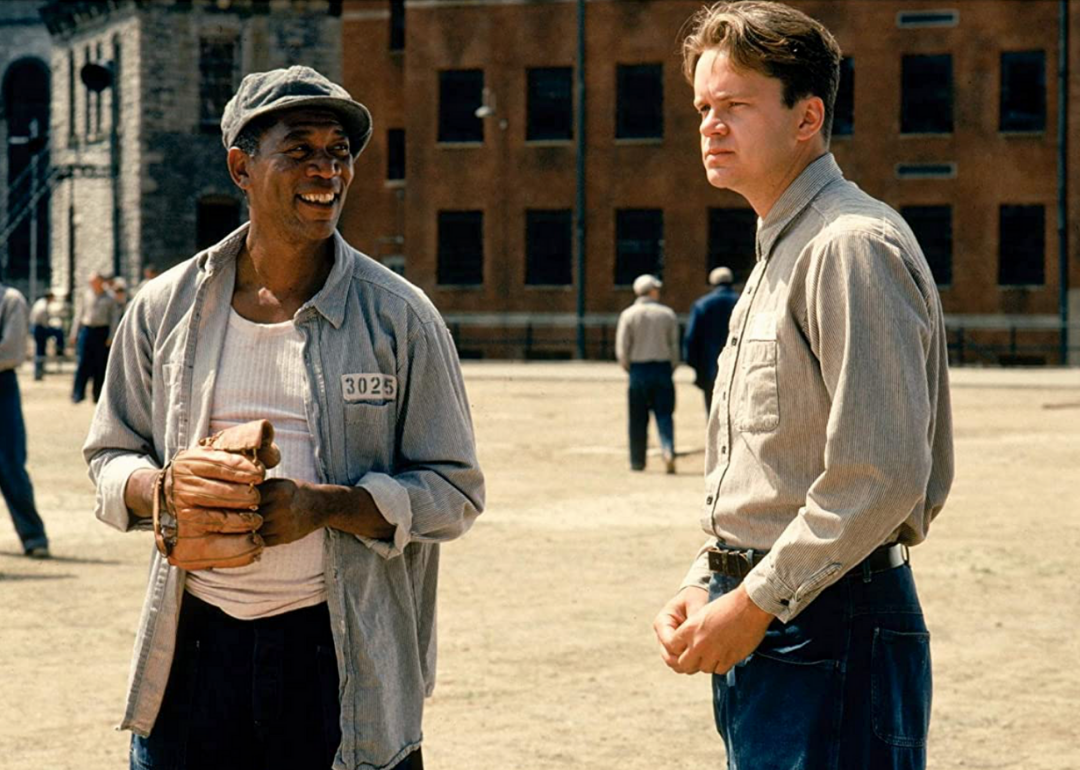
18 / 100
Castle Rock Entertainment
#83. The Shawshank Redemption (1994)
– Director: Frank Darabont
– Stacker score: 90.6
– Metascore: 81
– IMDb user rating: 9.3
– Runtime: 142 minutes
Even decades after its release, “The Shawshank Redemption” still holds a top spot on IMDb’s list of Highest Rated Titles. Here on Stacker’s list, it doesn’t necessarily fare as well, but that’s not to say the film is anything short of spectacular. Based on a novella by Stephen King, it tells the story of Andy Dufresne (Tim Robbins), a banker convicted of his wife’s murder who grapples with decades of prison life starting in the mid-1940s. Helping him cope is a fellow inmate named Red (Morgan Freeman). In 2015, the Library of Congress chose the film for preservation in the National Film Registry.
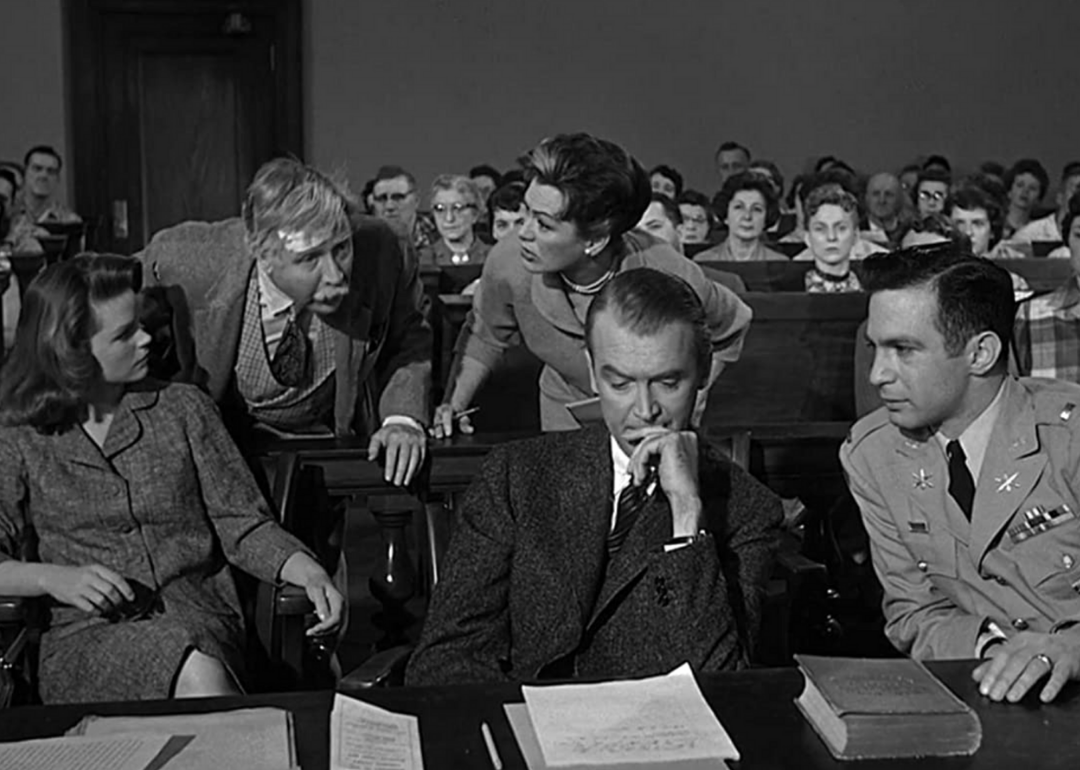
19 / 100
Columbia Pictures
#82. Anatomy of a Murder (1959)
– Director: Otto Preminger
– Stacker score: 91.1
– Metascore: 95
– IMDb user rating: 8
– Runtime: 161 minutes
Otto Preminger’s epic courtroom drama follows lawyer Paul Biegler (James Stewart) as he tries to clear Army Lt. Manion (Ben Gazzara) for the murder of an innkeeper Manion’s wife (Lee Remick) said raped her. In 2012, the film was selected for preservation in the National Film Registry by the Library of Congress. The film is based on the 1958 book by the same name, written by Michigan Supreme Court Justice John D. Voelker (pen name: Robert Traver), which is a fictionalized account of the real-life trial.
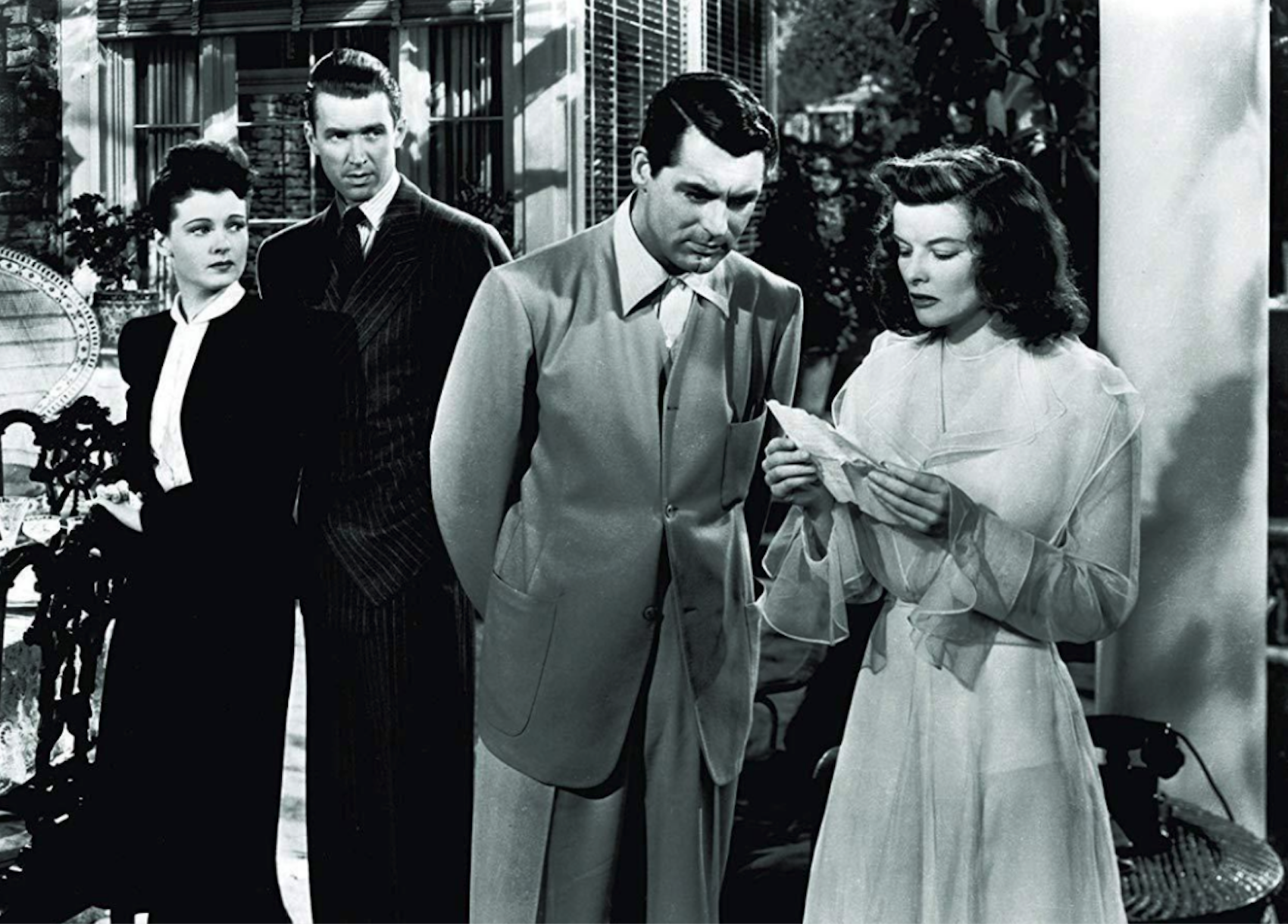
20 / 100
Metro-Goldwyn-Mayer
#81. The Philadelphia Story (1940)
– Director: George Cukor
– Stacker score: 91.1
– Metascore: 96
– IMDb user rating: 7.9
– Runtime: 112 minutes
Starring Cary Grant, Katharine Hepburn, and James Stewart, this 1940 classic takes place days before socialite Tracy Lord (Hepburn) is set to remarry a stuffed-shirt millionaire. Things seem to be running smoothly enough until Lord’s ex-husband (Grant) and a reporter (Stewart) enter the picture and respectively express feelings for her. What ensues is an Old Hollywood romantic comedy of the highest order. The film took home two of the six Academy Awards for which it was nominated, including James Stewart for Best Actor and Donald Ogden Stewart for Best Adapted Screenplay.
You may also like: 25 iconic closing shots from film history
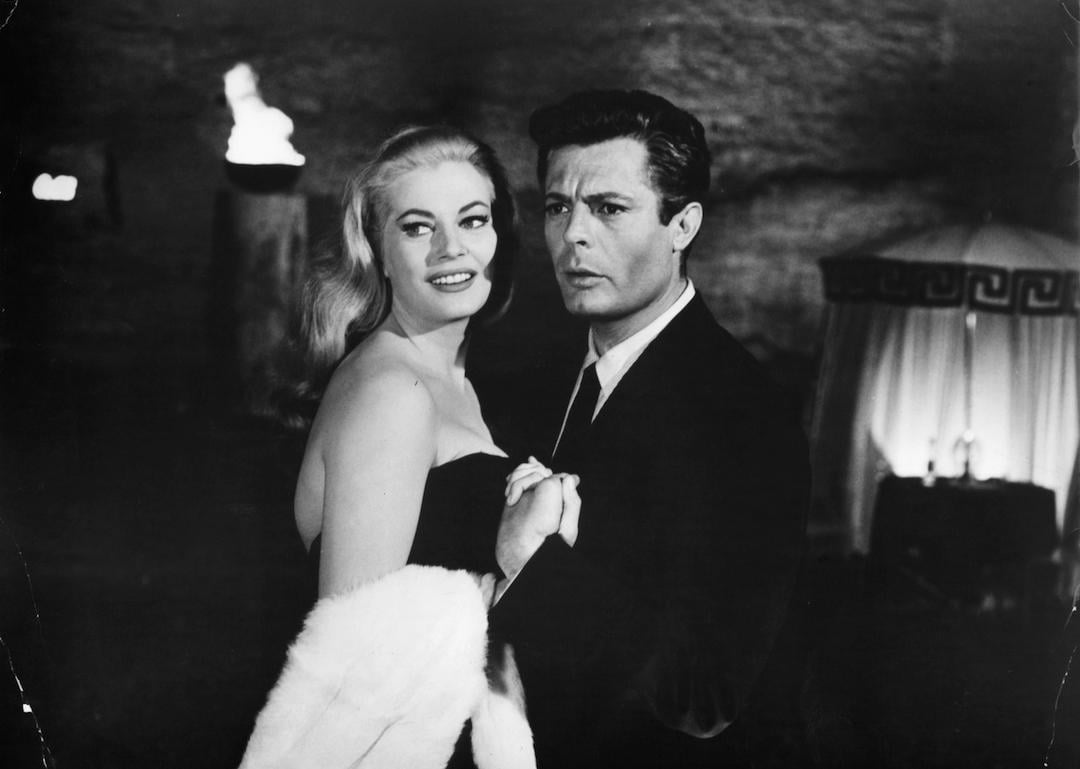
21 / 100
American International Pictures // Getty Images
#80. La Dolce Vita (1960)
– Director: Federico Fellini
– Stacker score: 91.1
– Metascore: 95
– IMDb user rating: 8
– Runtime: 174 minutes
Spanning nearly three hours, “La Dolce Vita” functions as an early critique of gossip and celebrity culture via mid-20th century Rome. The film follows celebrity reporter Marcello Rubini (Marcello Mastroianni) as he lurks in the periphery of the spotlight, caught between his questionable professional tendencies and his own sneaking suspicion that the glamorous upper class isn’t all it’s cut out to be. “La Dolce Vita” was nominated for four Oscars: Best Director, Best Original Screenplay, Best Costume Design, and Best Art Direction, winning for Costume Design.
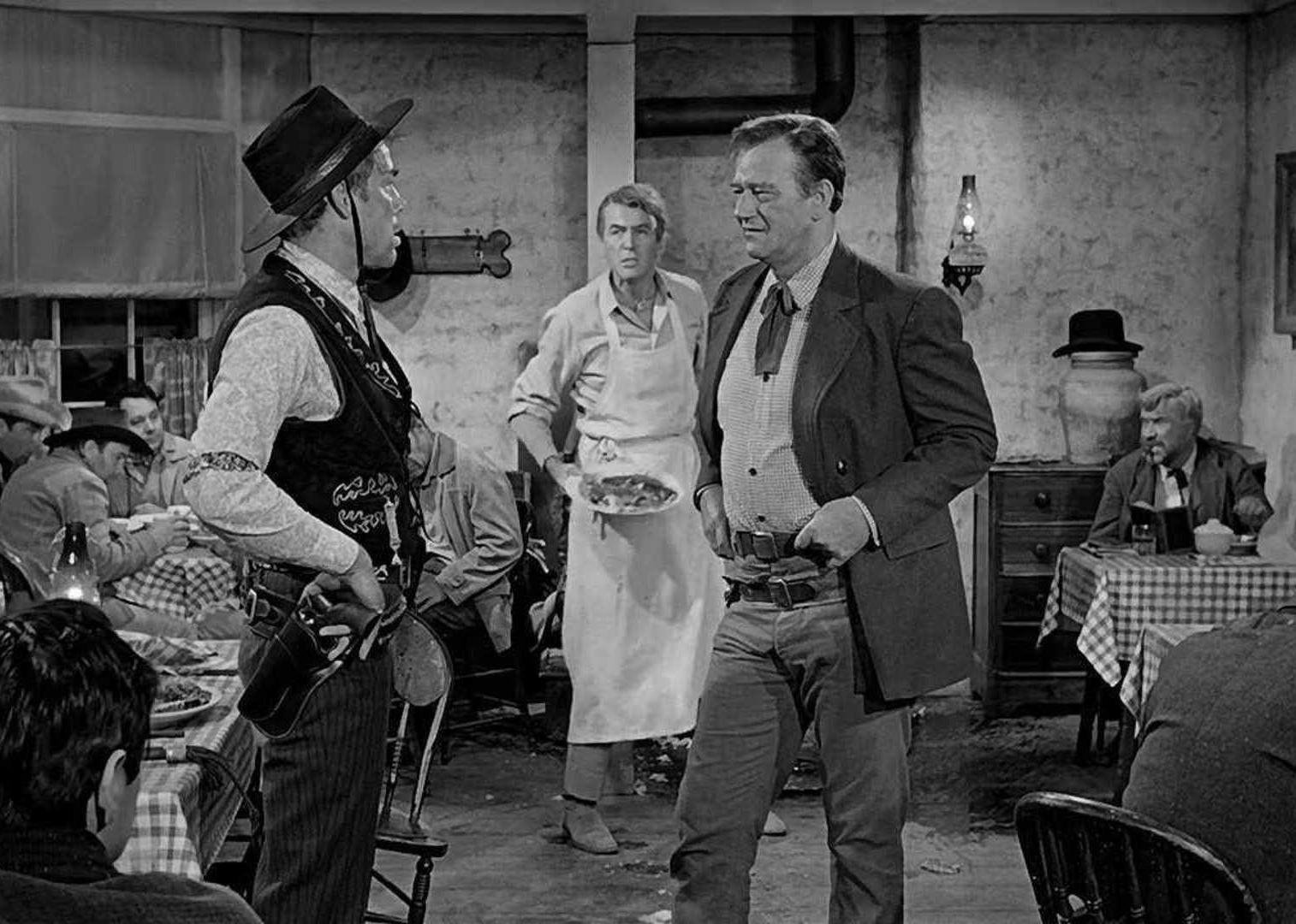
22 / 100
Paramount Pictures
#79. The Man Who Shot Liberty Valance (1962)
– Director: John Ford
– Stacker score: 91.1
– Metascore: 94
– IMDb user rating: 8.1
– Runtime: 123 minutes
Director John Ford and actor John Wayne collaborated on several celebrated movies, including this one from 1962. In the film, a senator (James Stewart) returns to the town where he once famously shot a man named Liberty Valance. Or did he? As he recounts the tale, it’s revealed that a gunslinger named Tom Doniphon (John Wayne) might be the story’s true hero. “The Man Who Shot Liberty Valance” was selected for preservation in the National Film Registry by the Library of Congress in 2007.
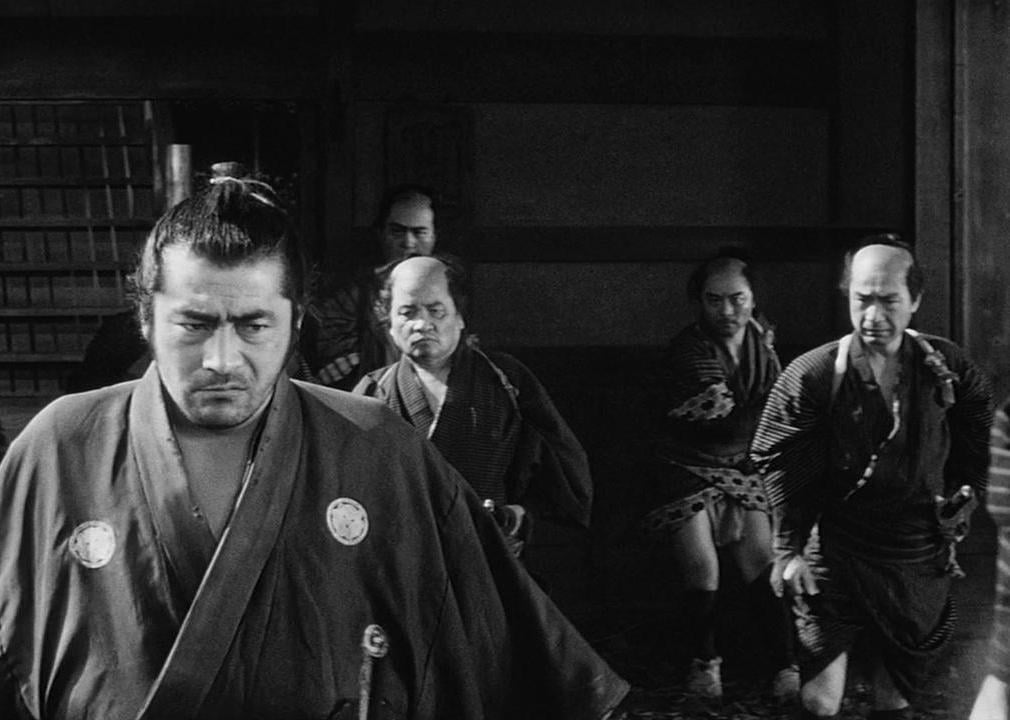
23 / 100
Kurosawa Production Co.
#78. Yojimbo (1961)
– Director: Akira Kurosawa
– Stacker score: 91.1
– Metascore: 93
– IMDb user rating: 8.2
– Runtime: 110 minutes
This legendary samurai film stars Toshiro Mifune as a nameless, masterless samurai who takes refuge in a village where two powerful businessmen are warring over the local gambling scene. When the samurai offers to serve as bodyguard for both of them, the tension reaches a boiling point. “Yojimbo” was remade twice as a Western—by Walter Hill in 1996 as “Last Man Standing,” and Sergio Leone in 1964 as “A Fistful of Dollars.”
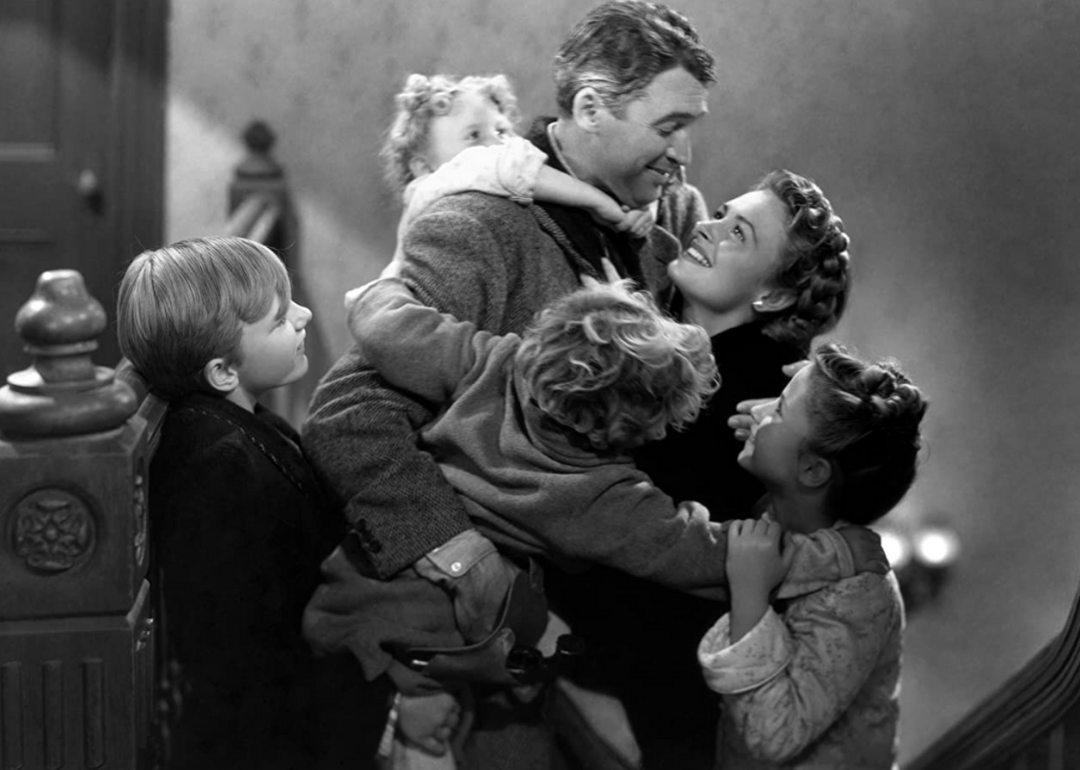
24 / 100
Liberty Films
#77. It’s a Wonderful Life (1946)
– Director: Frank Capra
– Stacker score: 91.1
– Metascore: 89
– IMDb user rating: 8.6
– Runtime: 130 minutes
This 1946 classic might make for ideal holiday viewing, but the truth is there’s never a wrong time to watch it. Directed by Frank Capra and starring James Stewart, “It’s a Wonderful Life” shows a businessman (Stewart) what life would have been like had he never existed. To think, the movie itself wouldn’t exist had a frustrated writer named Philip Van Doren Stern not sent his rejected short story out as a Christmas card to all his friends and loved ones. The classic earned five Academy Award nominations, including Best Picture.

Hi there to all, for the reason that I am genuinely keen of reading this website’s post to be updated on a regular basis. It carries pleasant stuff.
Great information shared.. really enjoyed reading this post thank you author for sharing this post .. appreciated
You’re so awesome! I don’t believe I have read a single thing like that before. So great to find someone with some original thoughts on this topic. Really.. thank you for starting this up. This website is something that is needed on the internet, someone with a little originality!